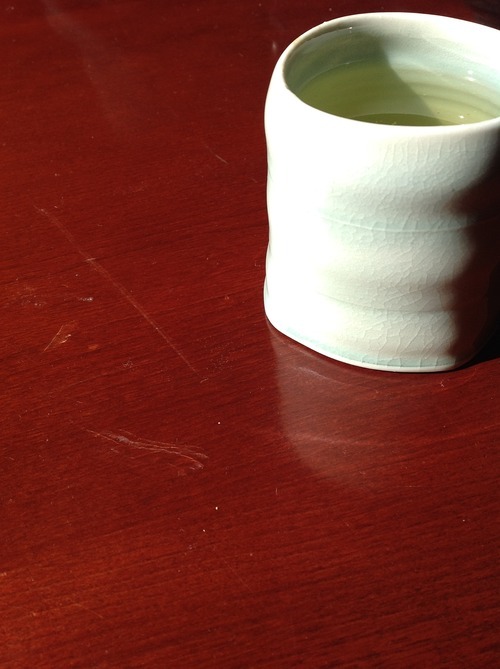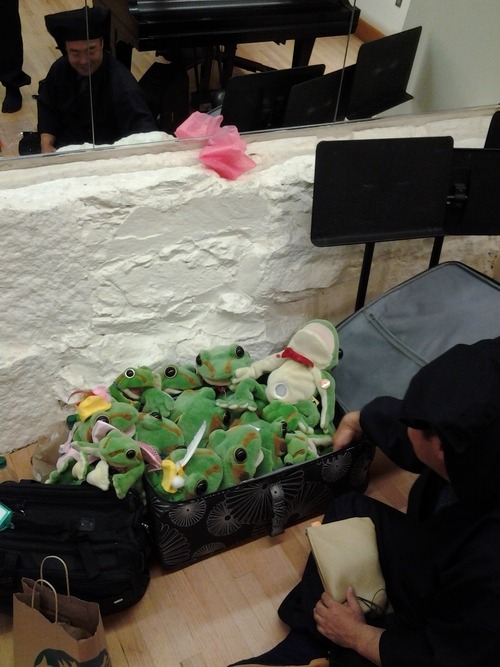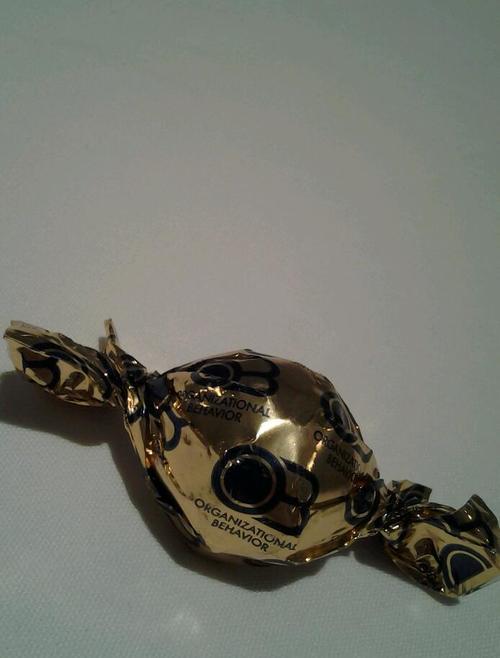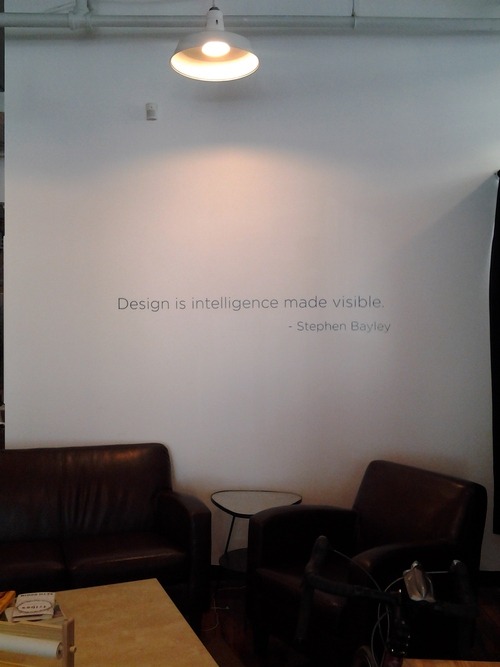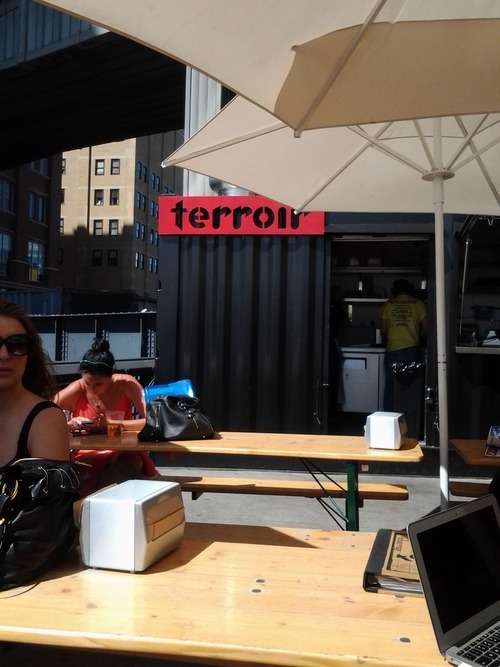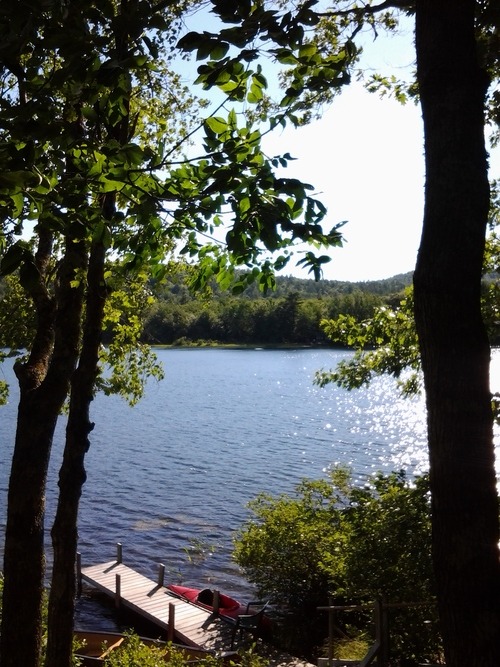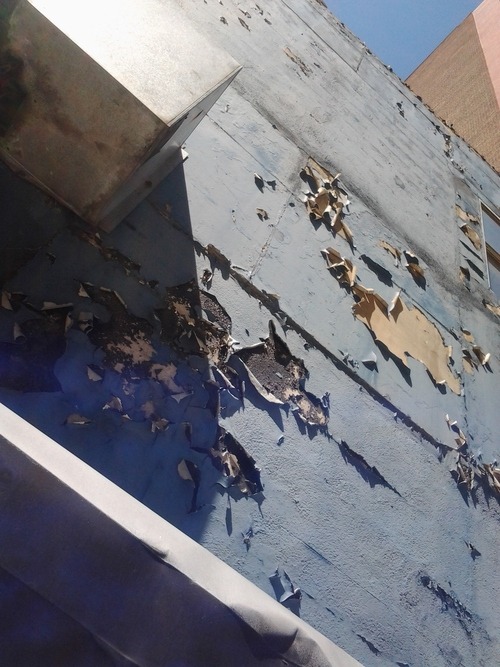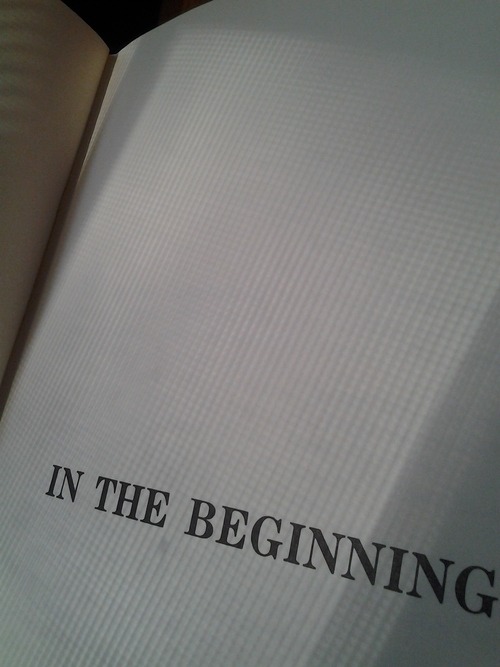to celebrate the arbitrarily anthropocentric turning of the year, i brought bagels and bialys south from kossar's to DC, there to join with several interpretations of the meaning of lamb, a diversity of cookies, several pounds of coal country bacon, a bread pudding made with panettone, many tarts, and several beverages i have been wanting to try for some time.
among other things.
the dishwasher has already run five times, and the drinks cabinet is rich in high-proof possibility. good thing i packed my spare liver.
a happy new year to you, and you, and you, and you ...
Dec 31, 2012
bonne année
Posted by
vaughn tan
0
comments
![]()
![]()
Labels: dc, drink, execution success, food
Dec 27, 2012
problem-finding, problem-solving
I think our whole society is much too problem-solving oriented. It is far more interesting to [participate in] ‘problem creation’ … You know, ask yourself an interesting enough question and your attempt to find a tailor-made solution to that question will push you to a place where, pretty soon, you’ll find yourself all by your lonesome — which I think is a more interesting place to be.right on; i think of it as problem-finding myself.
Posted by
vaughn tan
0
comments
![]()
![]()
Labels: decisions, design, education, instruction, intransigence, intuition, process, scalefree, theory, work
Dec 18, 2012
fruitcake

perhaps due to its emanations of tropical and spirituous vapours, this fruitcake-containing box was lavished with doggy affections by the pit bull downstairs while it lay on the front steps (all in the spirit of play of course). not every fruitcake that arrives in the mail is good but this one, from the bosky slopes of woodside, calif., is cause for great anticipation by man and beast alike.
[thx halsey]
Posted by
vaughn tan
0
comments
![]()
![]()
Labels: execution success, gifts
Dec 14, 2012
resincloth hull

just lying around the media lab.
Posted by
vaughn tan
0
comments
![]()
![]()
Labels: cambridge, craft, execution success
Dec 7, 2012
less is more

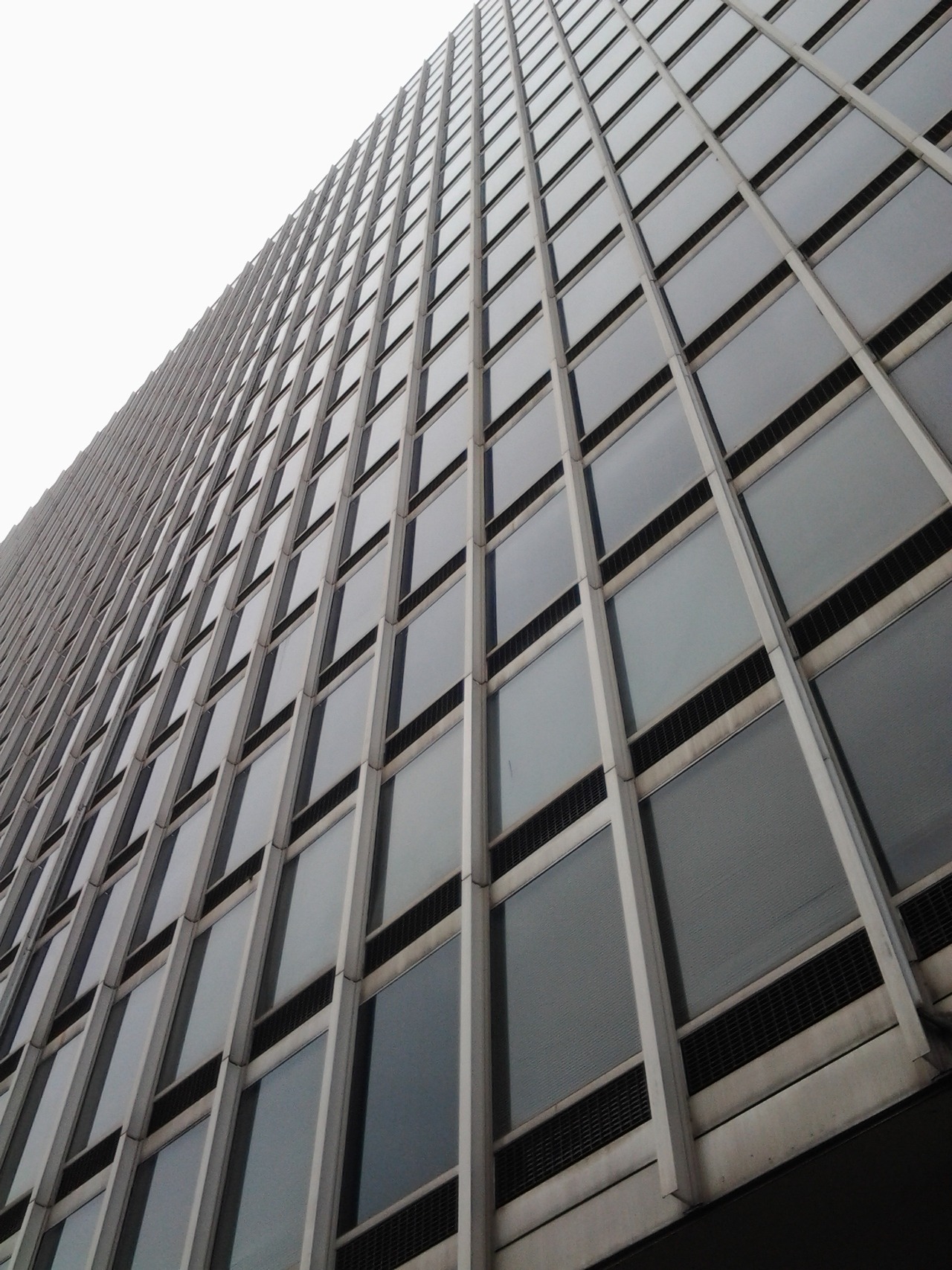
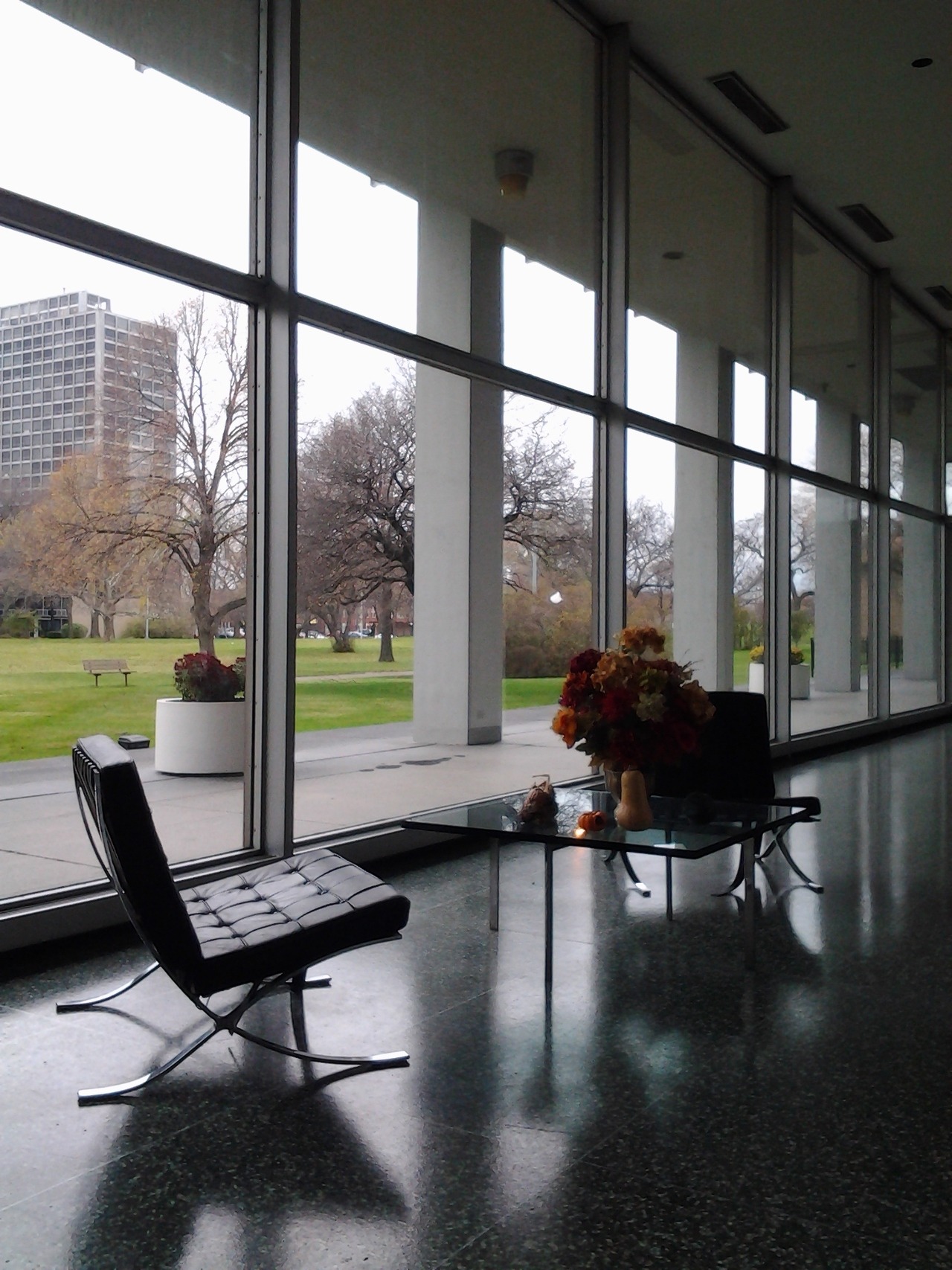
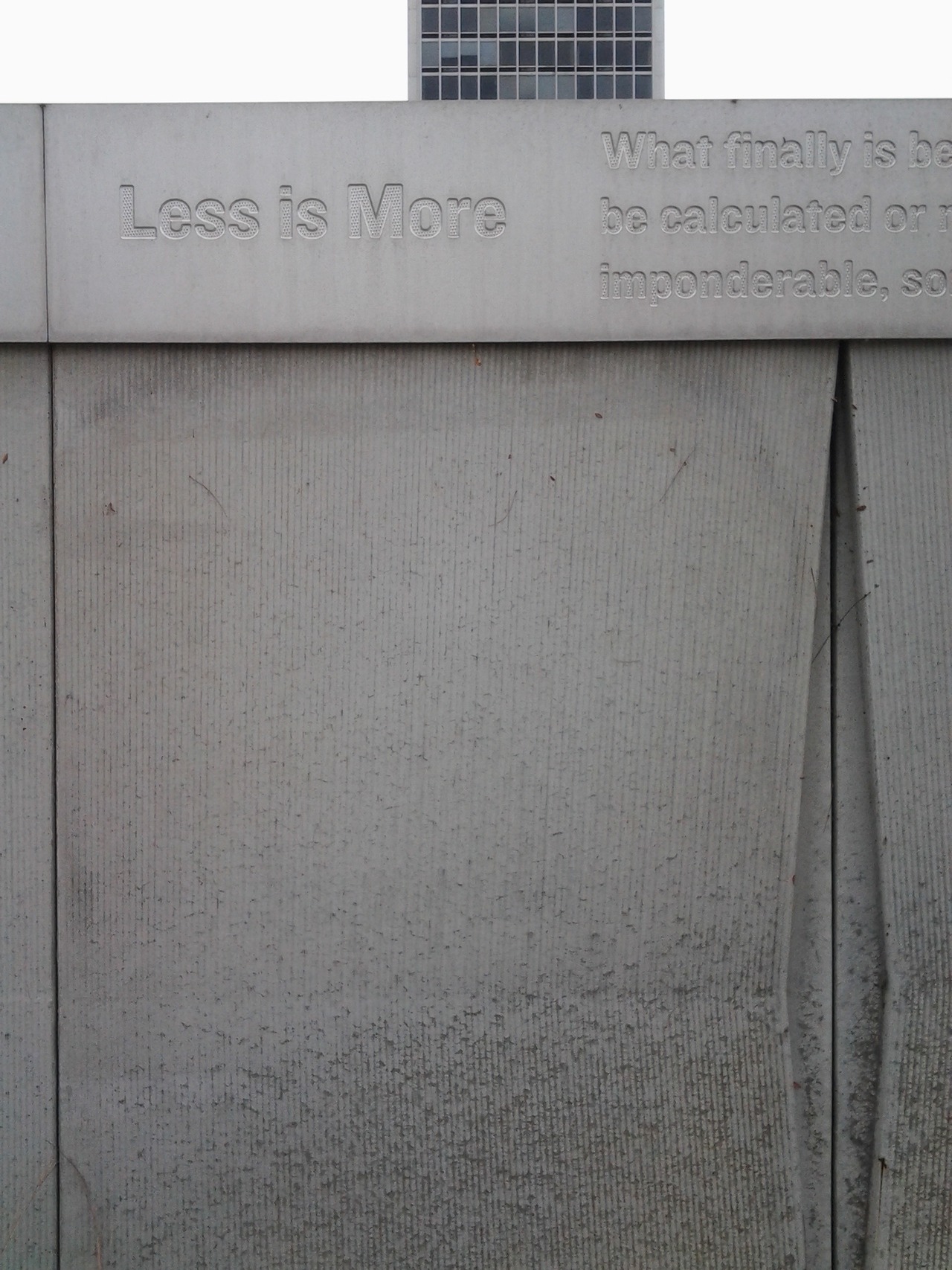
a chilly, grey-day visit to lafayette park.
Posted by
vaughn tan
0
comments
![]()
![]()
Labels: architecture, concrete, detroit, mies van der rohe
Dec 6, 2012
negative capability
at once it struck me what quality went to form a man of achievement, especially in literature, and which Shakespeare possessed so enormously—I mean Negative Capability, that is when man is capable of being in uncertainties, mysteries, doubts without any irritable reaching after fact and reason.
Posted by
vaughn tan
0
comments
![]()
![]()
Labels: complexity, execution success, intuition, the good life, theory
Dec 1, 2012
first principles
Before researchers become researchers they should become philosophers. They should consider what the human goal is, what it is that humanity should create ... Modern research divides nature into tiny pieces and conducts tests that conform neither with natural law nor with practical experiences. The results are arranged for the convenience of research, not according to the needs of the farmer. To think that these conclusions can be put to use with invariable success in the farmer's field is a big mistake.
Posted by
vaughn tan
0
comments
![]()
![]()
Labels: agriculture, complexity, design, epistemology, instruction, intuition, process, research, sustainability, theory
Nov 26, 2012
happiness comes from good coffee
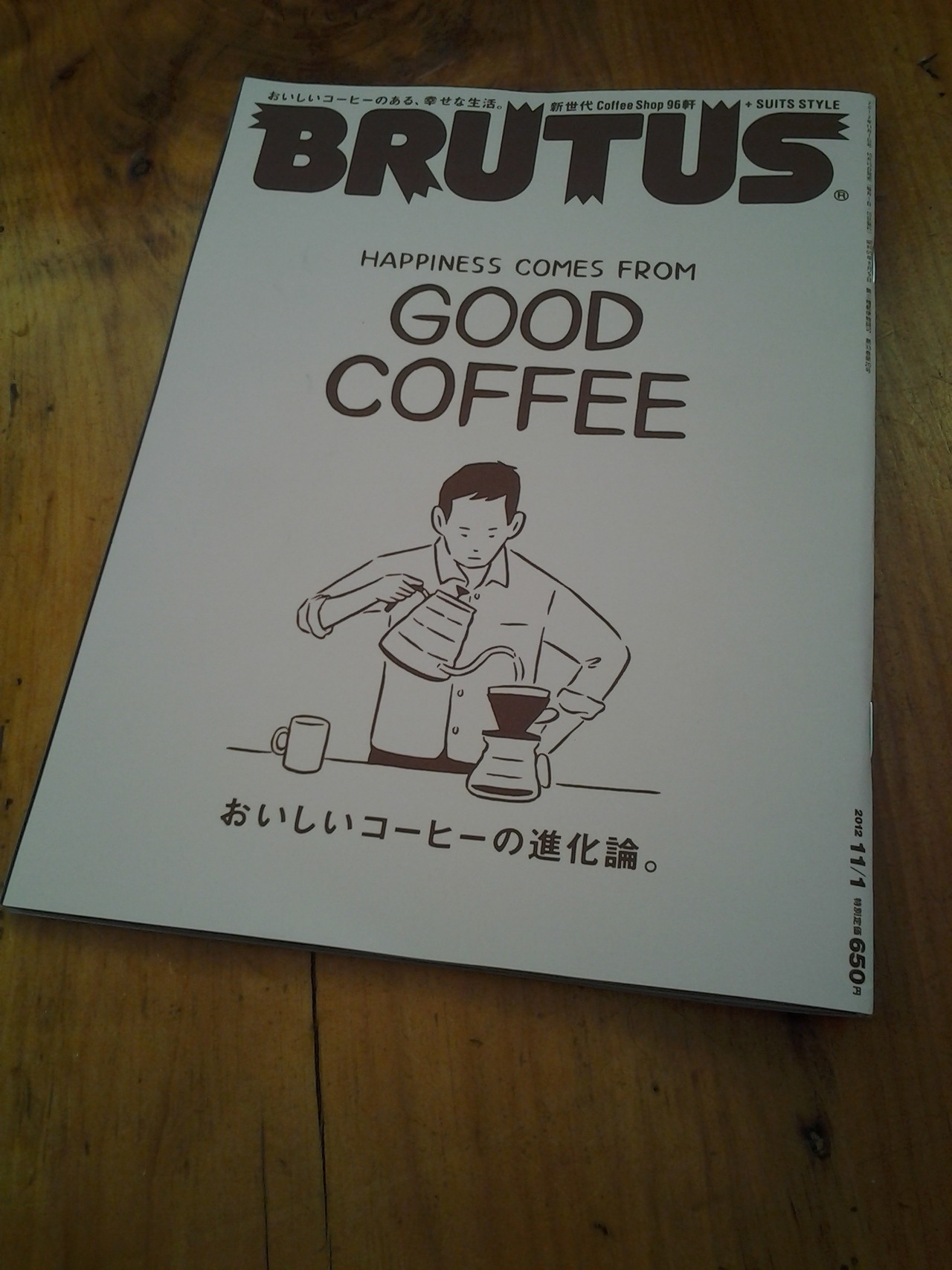
i have been buried beneath a pile of paper for days, but emerged briefly for a cup of coffee last friday morning. on the table for show and tell was the kodawari coffee issue of brutus*, another reminder (as if we needed one) that in the elaboration, codification, production, and reproduction of nuance and detail the japanese yield to no-one.
*(more)
Posted by
vaughn tan
0
comments
![]()
![]()
Labels: coffee, craft, decisions, epistemology, execution success, japan, theory
does not compute

the cynic says this email from patagonia is a cunning form of marketing misdirection. i have resisted all of cyber monday's blandishments so far.
Posted by
vaughn tan
0
comments
![]()
![]()
Nov 16, 2012
dumb ways to die
update: an official karaoke version! it is imperative that you watch this instructive informational video which incidentally demonstrates that good work continues to come out of mccann.
Posted by
vaughn tan
0
comments
![]()
![]()
Labels: execution success
Nov 9, 2012
it doesn't hurt to ask
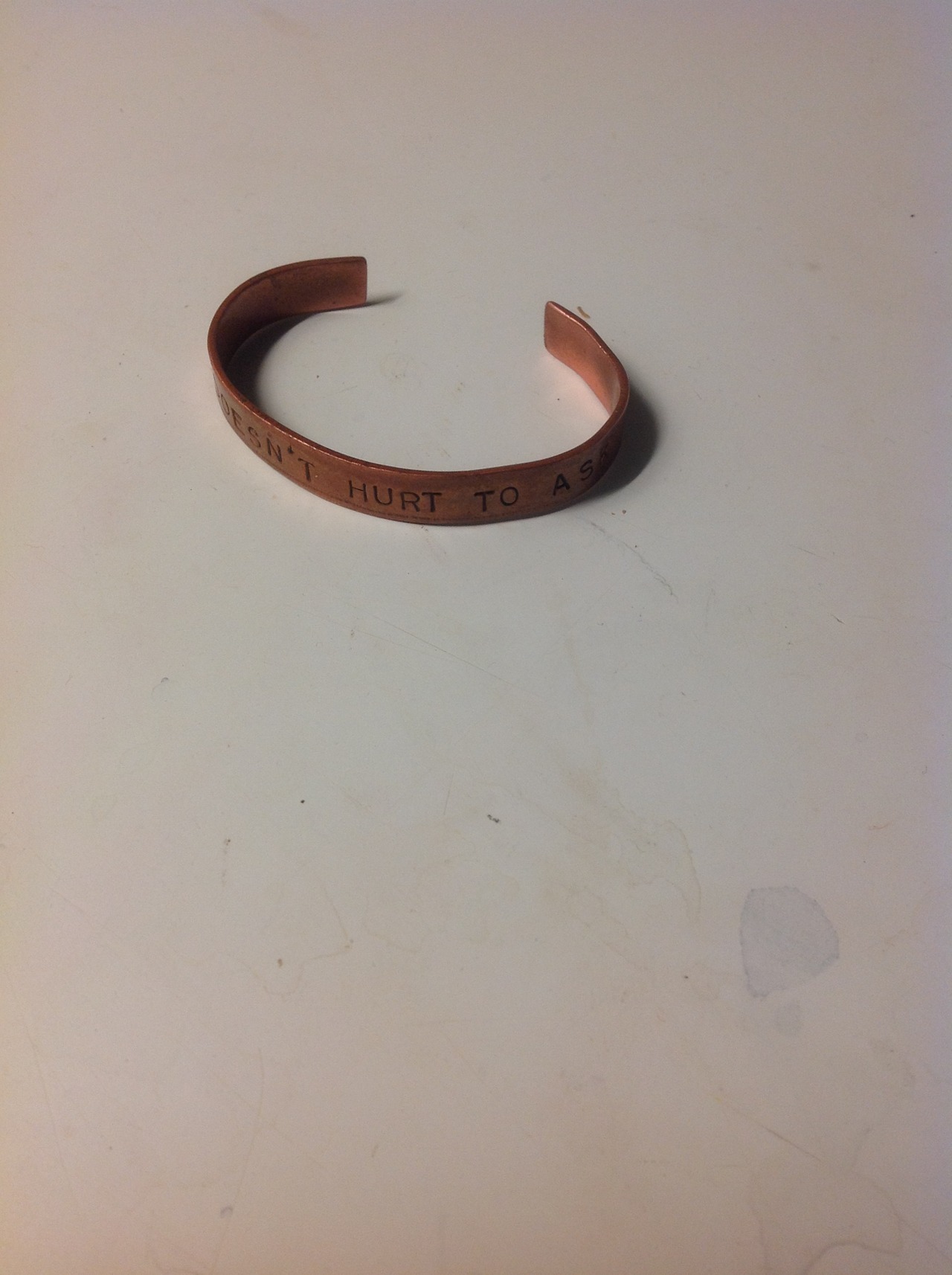

i made two of these on my last day at the ranch, using some apparently nearly pure copper sheet retrieved from the garbage can in the metal shop. the other one says: "eat your vegetables."
on the street
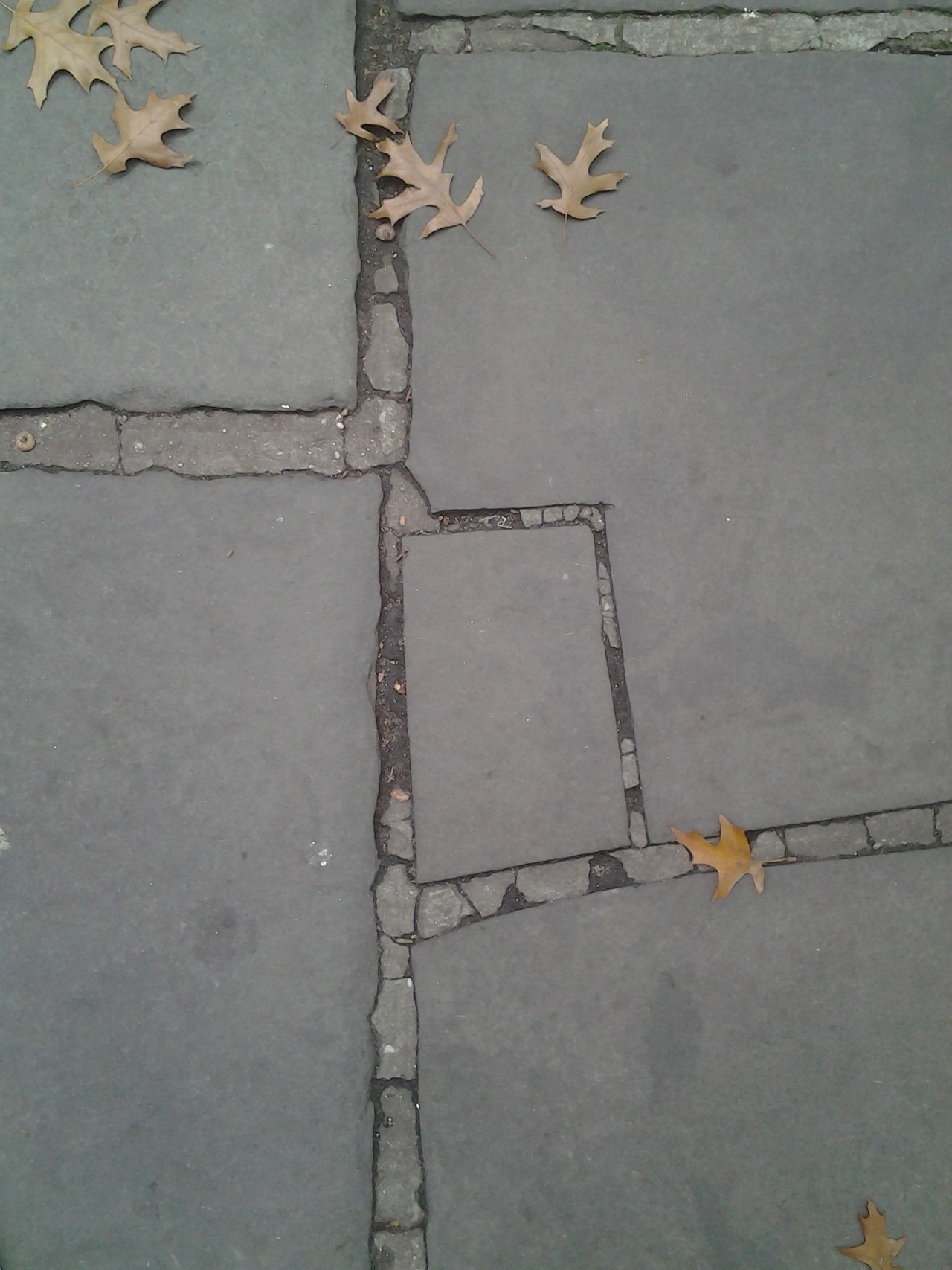
just north of st. marks, to be precise. someone took some trouble here and did not succumb to the false allure of uniform spacing.
Posted by
vaughn tan
0
comments
![]()
![]()
Labels: nyc
pithy
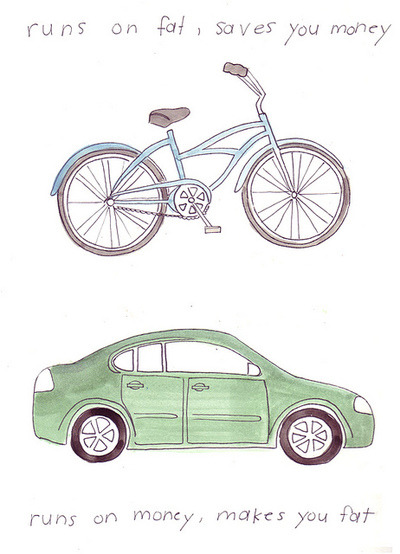
this summarises most of my feelings about cars and bicycles, though it leaves out the grim frustrations of parking in crowded cities, motorists who don't look when they open their doors or make turns, the particularly dispiriting nature of bicycling in wintry mix, and the gloom of car insurance and deductibles.
* did you click on the link and think "wtf?" don't fret: it is a feature not a bug. david neale is an australian jeweler and that is some item of personal adornment in the shape of a slice of rye. it is also available in danish.
Posted by
vaughn tan
0
comments
![]()
![]()
Labels: cars, cities, craft, decisions, moral fibre, things, weather
Nov 5, 2012
things
Few people are interested in things, except the mechanics who like engines. They are more interested in themselves and humanity, and theories, and emotions. I suppose quite a large percentage of people would not be able to name a grain of wheat from a grain of oats, or perhaps even a blackbird from a rook. Our ancestors of the nineteenth century grew up with things, so that they were real to them and had a sort of comfortable companionship now lost. That is why their things are so often more individual than ours. An old hobby-horse, turned up in an attic, will sometimes be so real that it is a piece of art, and clamours to be put on show in the hall downstairs. Not so the mass-produced Dobbin of to-day.
Posted by
vaughn tan
0
comments
![]()
![]()
Labels: books, care, epistemology, history, instruction, intuition, moral fibre, theory, things
Nov 3, 2012
the bee's knees
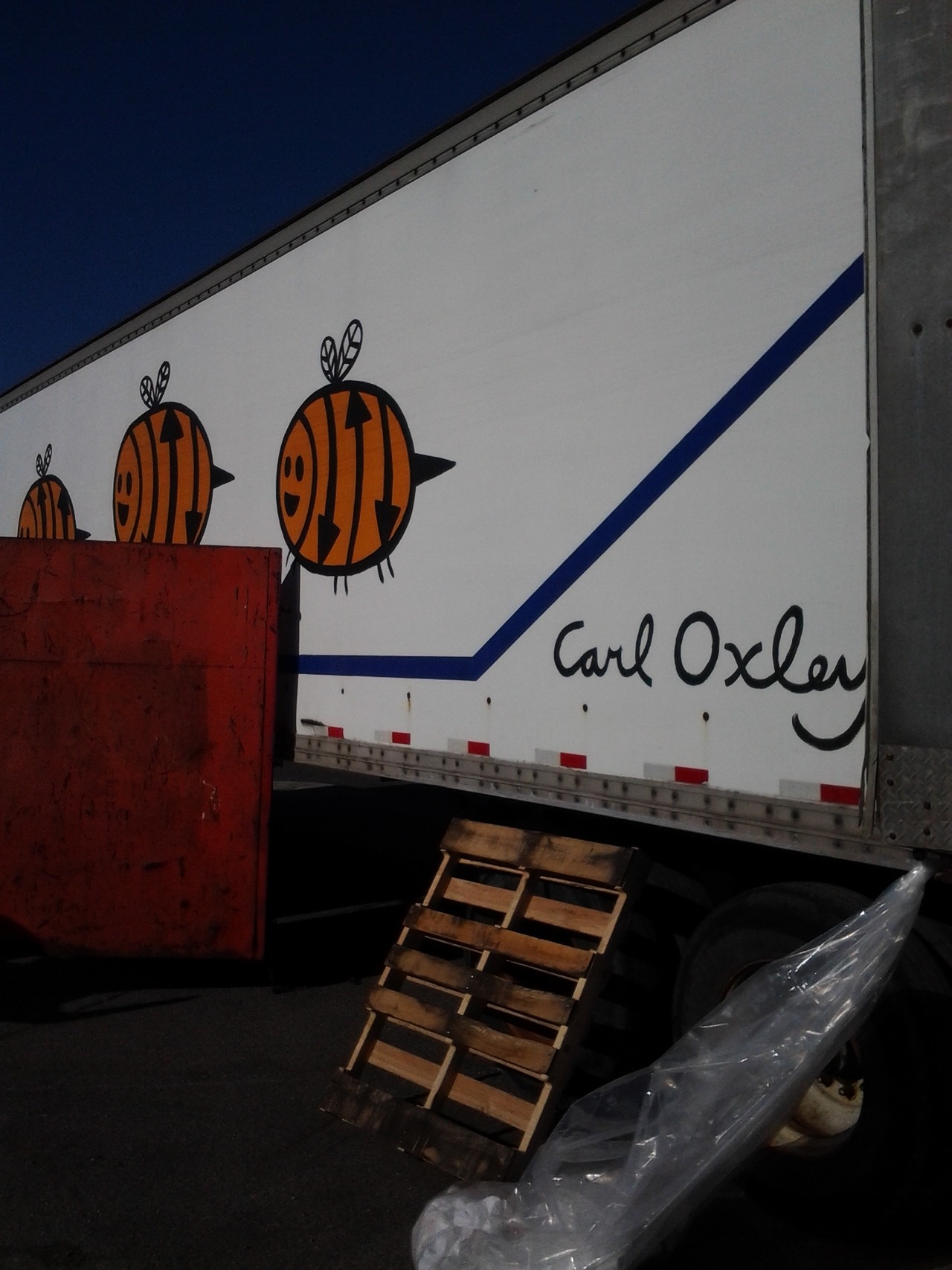
carl b. oxley III at the eastern market recycling station.
Posted by
vaughn tan
0
comments
![]()
![]()
Labels: art, design, detroit, execution success
Oct 29, 2012
salem
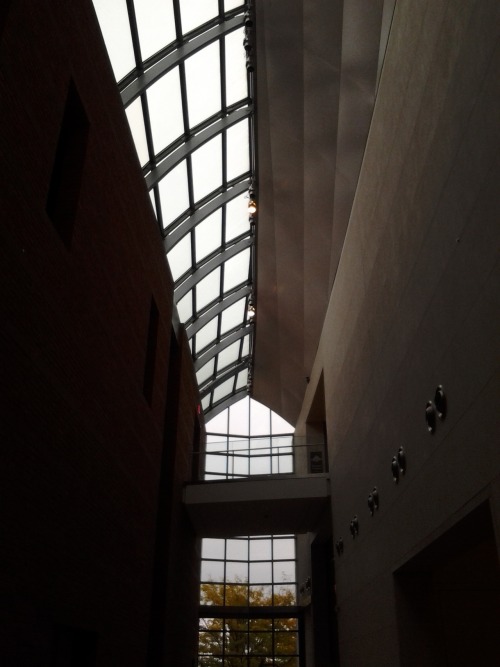
though the streets were overrun with orange, kettle korn, people in bad costumes, and fake cobwebs, jaho on the waterfront was empty and quiet. a kopi-c, a syphon, and a french press, and an hour and a half passed effortlessly. a&j king, earnestly artisanal bakers, was filled with the scent of butter and frangipane—but the locust-like swarms of halloween revelers had cleaned them out of all but a few classically formed brioches and cinnamon caramel cookies.
moshe safdie's addition to the peabody essex museum graciously balances light, air, mass, and gravity. it feels much like a small-scale version of the foster and partners great court in the british museum. there are many other wonderful things about the PEM. the main atrium contains a neat anish kapoor mirror sculpture (halo), though it would have been even more awesome suspended from the ceiling. the curatorial staff have taken the unusual approach of displaying artifacts from the historical collections with sly, smart interjections of modern and contemporary art and craft objects. why don't more museums with holdings in a range of periods do this? (louisiana in denmark is another noteworthy exception.) some pieces are tastily surprising: in the gallery of native american art, there is an avant-garde cape that appears to be fabricated from long strips of a translucent and silvery polymer, like something issey miyake would do. in fact, it is an unangax cape from the aleutian islands of alaska, made of pieces of sea lion intestine and dating to the early 19th century.
we took a short break at scratch kitchen, where the staff seemed overjoyed to be working on a drizzly and overrun sunday. 2pm is not too early for a beer when boulevard's tank 7 is on draft, and the pulled pork sandwich came on a firmly griddled bulkie roll which had not been made impenetrable by being toasted on the outside. i ate my half and then, when no one else was looking, the half that was not mine. the mac and cheese with bacon was made with orrechiette and the bacon, as advertised, made it "unspeakably delicious." the cauliflower soup had been passed through a tamis and was served with a drizzle of truffle oil—in this case a completely appropriate deployment. the owner once worked at harvest. a fine lunch in an unexpected spot.
back to the PEM, where the japanese galleries are particularly overstuffed with great stuff, including a monumental—yet modular—circular bench made of red oak with black lacquered hemp sections masquerading as gallery furniture. but where is the rest of e.s. morse's collection of japanese quotidian objects? let's hope that their massive planned expansion will return that collection to permanent display.
we had to leave when the museum closed for the day, but i did not want to.
Posted by
vaughn tan
0
comments
![]()
![]()
Labels: art, craft, decisions, execution success, food, museums, neat, salem
Oct 25, 2012
nearly there
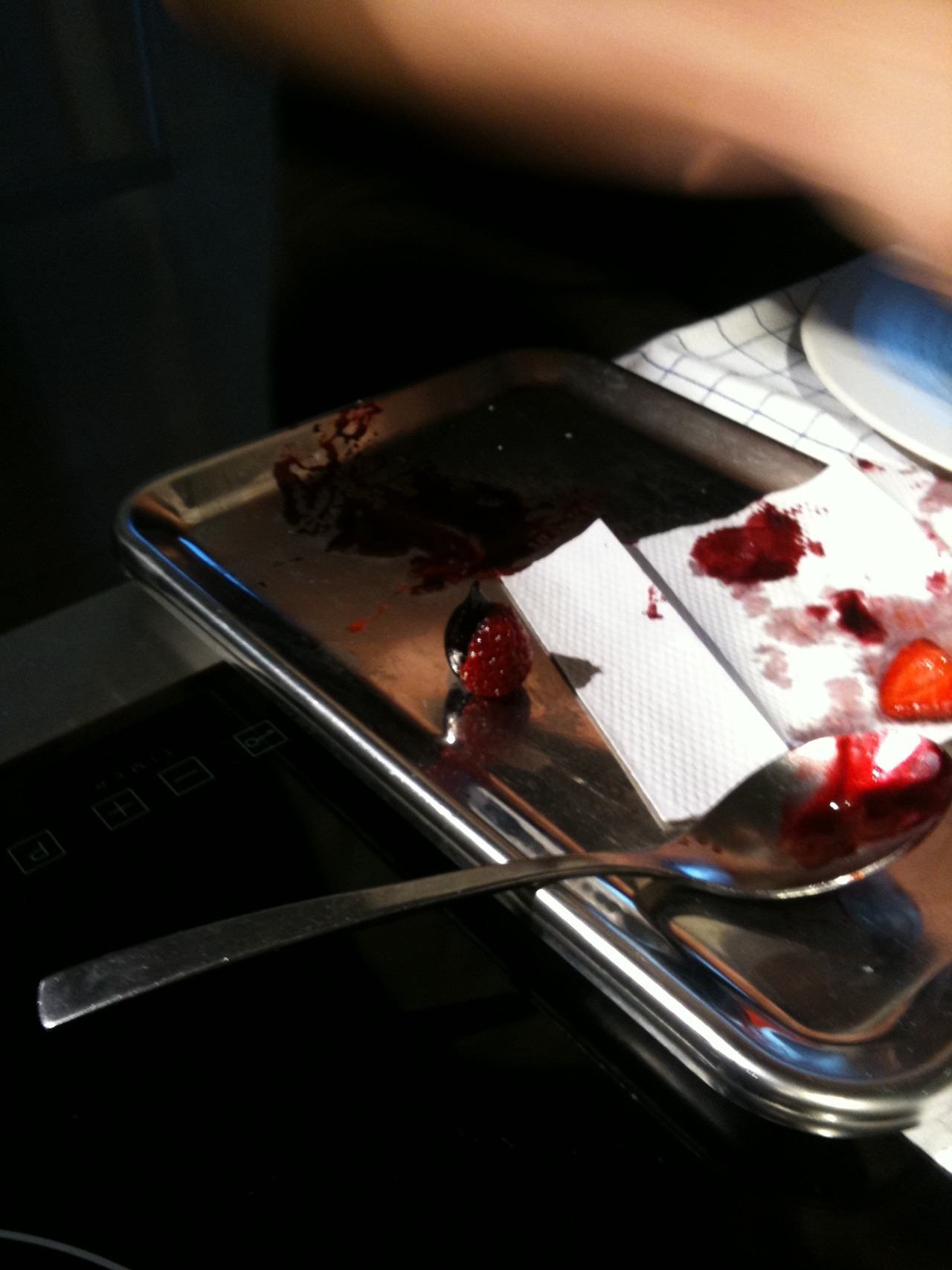
R&D in high-end cuisine looks a lot like R&D anywhere else, but some of its frustrations are domain-specific. up top, a dish that was nearly there but, as things turned out, not quite there enough.
read more here in the first of a series of vignettes on hydration is our highest priority illustrating life in some parts of the remarkably small world of research and development in food.
Posted by
vaughn tan
0
comments
![]()
![]()
Labels: art, complexity, craft, decisions, design, execution failure, food, instruction, moral fibre, research, science, sociology
Oct 23, 2012
going on progress
a 17-hour, 9.1 mile loop, with detours due to poor navigation. in order: everyman on west broadway, chambers street, some nyc city agencies, the west side linear park, the blue bottle on 15th, wework chelsea, the bowery kitchen supply store, blue bottle on 15th again, the high line, the architectural offices of diller scofidio + renfro, printed matter, moore brothers, booker and dax, and finally ippudo.
the high line is a gem in an already-great park city. i visited it a few days after it opened and remember being profoundly unimpressed by the sparse plantings but particularly liking the hardware fittings (look at those water fountains!). something made me come back whenever i was in the city and it was better every time.
the seating, plantings, and food/beverage choices are impeccable. a testament to the value of good taste combined with abundant cash and a benevolently autocratic decision-making process. there is a section just before the exit on 23rd st in which the footpath narrows slightly as it passes between two walls of abundantly leafed birches (a variety with strangely arrowhead-shaped leaves) trimmed just so their foliage pushes slightly into the path. the feeling of compression as you enter this passage of trees is a wonderful thing.
Posted by
vaughn tan
0
comments
![]()
![]()
Labels: art, biology, books, cities, coffee, complexity, design, execution success, furniture, high line, mornings, nyc, research, sociology, the good life
Oct 20, 2012
moral fibre
edge.org interviews daniel lieberman. of particular note:
... there's a reversal of class today. Now, it's only the very wealthy who can afford to be physically active and to eat a good diet, and it's the lower classes, the people in the working classes that cannot afford to actually be physically active. People who are well-off, the one-percenters or maybe the five-percenters of our country, can afford to go to health clubs and take yoga classes and buy organic food. But most Americans today, particularly those who are in the working class, have to work all day long, they have to commute long hours. They don't have time to exercise; they can't afford to buy food that's very healthy. The result is that there's now an interesting reversal that never occurred before in human evolution, which is that the wealthier you are, the healthier you are.and
We love comfort, and people make a lot of money selling us comfort, but I would challenge the notion that comfort is usually good for us.the meditations and the care of the self are two interesting books to think about here, as is the influence of weather on the development of moral fibre.
Posted by
vaughn tan
0
comments
![]()
![]()
Labels: complexity, design, dis-ease, education, enough, entropy, execution failure, execution success, fivefingers, moral fibre, sustainability, the good life, theory
Oct 19, 2012
low entropy life
what does a low entropy life look like? and is the only way to reduce entropy locally to export it into the enclosing system?
i hope this is more than just a rationalization of lifestyle choices.
Posted by
vaughn tan
0
comments
![]()
![]()
Labels: design, entropy, scalefree, sustainability, the good life, theory
Oct 18, 2012
for the time being
it's been a few years since i was up late in snowmass after a day at the woodshop reading annie dillard's for the time being, a many-threaded extended reflection on theodicy and the ways humans are evil to each other. the book ranges considerably into the realm of cultural evolutionary biology, which i've been thinking about of late (robert boyd and peter richerson write compelling about it in a book anyone interested in the evolution of culture should read). she writes:
Cultural evolution happens fast; it accelerates exponentially and, to put it less precisely, explodes. Biological evolution takes time, because it requires biological generations; the unit of reproduction is the mortal and replicating creature. Once the naked ape starts talking, however, "the unit of reproduction becomes" — in the words of anthropologist Gary Clevidence — "the mouth."more from pierre teilhard de chardin (who also plays a supporting role in dan simmons's hyperion cantos, one of my favourite space operas):
Geologists have considered every concentric layer forming the Earth except one: the layer of human thought. [chardin might also have said, and of human history and its impact on the land.] However far we look into the past, we see the waves of the multiple breaking into foam.a recurrent theme: the disparity between religion (which abrogates to itself the experience of holiness) and the experience of holiness itself.
Throughout my whole life, during ever minute of it, the world has been gradually lighting up and blazing before my eyes until it has come to surround me, entirely lit up from within. (chardin)freeman dyson's infinite in all directions (his gifford lectures) captures this same sense of holiness, of sensing the flame behind the form. there is also an element, as the shakers understood, of doing something for the sake of doing it. mother ann lee said "Do all your work as though you had a thousand years to live, and as though you were going to die to-morrow." dillard finds an example from one of the layers of our shared history:
The more I work, the more I see things differently, that is, everything gains in grandeur every day, becomes more and more unknown, more and more beautiful. The closer I come, the grander it is, the more remote it is. (giacometti)
Solutrean artisans knapped astonishing yellow blades in the shape of long, narrow pointed leaves. The longest Solutrean blade is fourteen inches long, four inches at its beam, and only one-quarter inch thick. Their intricate technique is overshot flaking; it is, according to Douglas Preston, "primarily an intellectual process" ... Hold one of these chert knives to the sky. It passes light. It shines dull, waxy gold — brown in the center, and yellow toward the edges as it clears. At each conchoidal fractured edge all the way around the double-ogive form, at each cove in the continental stone, the blade thins from translucency to transparency. You see your skin, and the sky. At its very edge the blade dissolves into the universe at large. It ends imperceptibly at an atom. Each of these delicate, absurd objects takes hundreds of separate blows to fashion. At each stroke and at each pressure flake, the brittle chert might — and, by the record, very often did — snap. The maker knew he was likely to lose many hours breath-holding work at a tap. The maker worked in extreme cold. He knew no one would ever use the virtuoso blades. He protected them, and his decendants saved them intact, for their perfection. To any human on earth, the sight of one of them means: someone thought of making, and made, this difficult, impossible, beautiful thing.looking beyond trappings and outward signs is the key. chardin is the originator of the virtual sacrament, first as a soldier in the second world war, and then later as an archaeologist in china:
Since once more, my Lord, not now in the forest of the Aisne but in the steppes of Asia, I have neither bread, nor wine, nor altar, I shall rise beyond symbols to the pure majesty of the real, and I shall offer you, I your priest, on the altar of the whole earth, the toil and sorrow of the world.it comes back to a particular type of love for the world:
We love in all we seek. The hidden shows up in too-plain sight. It lives captive on the face of the obvious — the people, events, and things of the day — to which we as sophisticated children have long since become oblivious. What a hideout: Holiness lies spread and borne over the surface of time and stuff like colour. What to do? There is only matter, Teilhard said; there is only spirit, the Kabbalists and Gnostics said. These are essentially identical views. Each impels and individual soul to undertake to divinize, transform, and complete the world, to — as these thinkers say quite as if there were both matter and spirit — "subject a little more matter to spirit," to "lift up the fallen and to free the imprisoned," to"work for the redemption of the world," to "extract spiritual power without letting any of it be lost," to "help the holy spiritual substance to accomplish itself in that section of creation in which we are living," to "mend the shattered unity of the divine worlds," to "force the gates of the spirit, and cry, 'Let me come by.'" When one of his Hasids complained of God's hiddenness, Rabbi Pinhas said, "It ceases to be a hiding if you know it is hiding." But it does not cease to hide, not ever, not under any circumstance, for anyone.on this, also see: a marvellous stage; wheatcakes; and the expanding self.
Posted by
vaughn tan
0
comments
![]()
![]()
Labels: books, complexity, decisions, epistemology, scalefree, sustainability
Oct 13, 2012
Oct 6, 2012
civilization
Pelorat said, "It seems to me, Golan, that the advance of civilization is nothing but an exercise in the limiting of privacy."
isaac asimov, foundation's edge
Posted by
vaughn tan
0
comments
![]()
![]()
Labels: books, complexity, decisions, design, epistemology, history, technology
Sep 27, 2012
openness, regulation, ambiguity
The grid is not only predictable but indeterminate, not only prescriptive but ambiguous.
albert pope, "the open city," in ladders.
Posted by
vaughn tan
0
comments
![]()
![]()
Labels: books, cities, complexity, decisions, epistemology, scalefree, sociology, theory
Sep 20, 2012
keromin
Posted by
vaughn tan
1 comments
![]()
![]()
Labels: execution success, frogs, ignobels, instruments, music, puns
Sep 18, 2012
costs, benefits
To live well in community, our individual consumption and acquisition will be reined in and held by the bonds of inconvenience. In turn, we will be connected in multiple ways to involuntary responsibilities, and natural seasons, and common cause. Living with a measure of inconvenience and with the energizing and irritating connections it implies keeps us ‘in our places' and ‘in our senses.’ We trap ourselves in a huge contradiction, I believe, when we — farmers and consumers alike — continue to want and cater to convenience on the one hand and mourn the loss of mutuality and collective concern on the other.
laura delind, "place, work, and civic agriculture" [thx jessd]
Posted by
vaughn tan
0
comments
![]()
![]()
Labels: agriculture, complexity, decisions, education, enough, epistemology, instruction, intransigence, theory
Sep 14, 2012
my new binding system is unstoppable
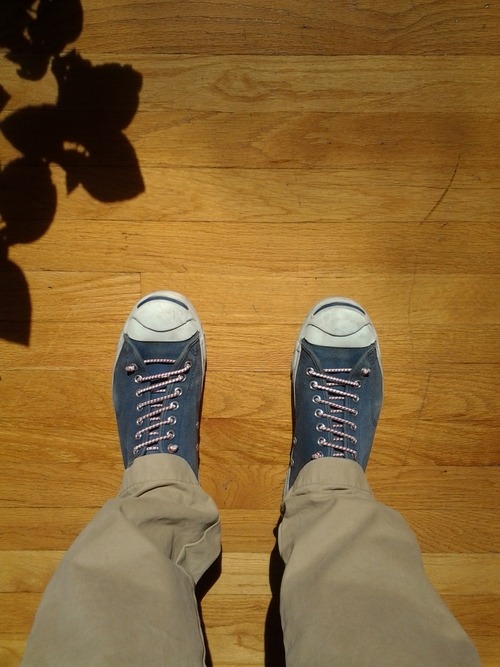
shock cord makes jack purcell much easier. this is MSR's silicone-core product intended for replacing tent-pole cords. you will also require scissors (make sure the blades are sharp) and an open flame (a lighter or gas burner will work).
do not pre-cut your cord. choose a hole to start with (A; above, the toe-ward outside hole) and thread from the outside in. the loose end of the shock cord will end up protruding from the last hole (B; above, the heel-ward inside hole) while the spool end will protrude from A. pull through to leave about 2-3 inches extra on the B-end. coarse adjust for tightness (err on the side of being a little loose), then cut the A-end of the shock cord and tie a stopper knot in it. adjust for tightness again and tie a loose stopper knot in the B-end. repeat on the other shoe. walk around for a bit to be sure of things. try the shoes with socks and without. when you're happy with the fit, secure the knot and trim both loose ends to just shy of the stopper knots. wet fingers and seal the cut cord ends quickly with an open flame, pinching immediately with wet fingers to fuse the melted sheathing.
walk around smugly.
Posted by
vaughn tan
2
comments
![]()
![]()
Labels: design, execution success, stuff, technology
Sep 9, 2012
first i'd heard of it

in revere, mass. on a hot and cloudy day, after a lobster roll of truly epic size, it is entirely appropriate to take a cone of soft serve for a walk along a sandy beach.
Posted by
vaughn tan
0
comments
![]()
![]()
Labels: beach, boston, execution success, food
Sep 7, 2012
Sep 2, 2012
Aug 31, 2012
Aug 30, 2012
depth and security
Being in Boston ... it's a little bit like meeting someone who you know is smart and very accomplished but is at the same time not at all posh or flashy or arrogant but is, at the same time, very generous. It's easy to learn and get to know them, but then you realize that, oh, my goodness, as you get to know them, there seems to be no end, there's a depth to the personality that can only be because they're learned, they're knowledgeable, and they are not too self-conscious. Boston is like an old, wise professor who is very generous in teaching you and with whom you feel like you can continue to develop.i agree wholeheartedly but this is not, perhaps, the universal experience of greater boston. also see: paul graham on cities and ambition.
kairos shen, in the boston globe.
Posted by
vaughn tan
0
comments
![]()
![]()
Aug 23, 2012
freedom and constraints
freedom is often misunderstood as the absence of constraints on your action. this is not the case: freedom is your ability to voluntarily choose the constraints on action and then to voluntarily submit to these constraints.
a useful consideration when designing products, services, organizations, careers, lives.
also see: kodawari, the key speech; mindful eating; equilibrium maintenance; the groundwork on the metaphysics of morals; the mad farmer liberation front; a just balance.
Posted by
vaughn tan
0
comments
![]()
![]()
Labels: enough, epistemology, intransigence, intuition, scalefree, sustainability, theory
Aug 22, 2012
co-presence and collaboration
last night, we talked about the difference between services that allow users to be remotely co-present and those that allow users to remotely collaborate.
co-presence is consumption behavior: you are with someone, observing what they are doing. all get, no post, no problems with collision. collaboration is production behavior: you are with someone, working on something together. collaboration is much harder to do well, and gets harder the closer to realtime the collaboration is: at minimum, it requires good collision handling and clear attribution at close to the minimum atomic size of the content being produced. text seems to be the only content being collaboratively produced in any large quantity now and text requires sub-sentence attribution markings. gdocs does neither particularly well, while hackpad does a great job: it is a first-class collaborative document editing tool marked by economy of means. hackpad is nearly feature-complete for my use-cases.
the closer to realtime the collaboration behavior is, the more important it is to have both a way be co-present and a way to collaborate. this is not only good for the user, it is a natural way for the service to reduce collision problems: collaborators tend to avoid bits which they know other collaborators are actively working on. it is smart to build services that tacitly encourage good use. the co-presence information that supports this kind of behavior can be parsimonious and still be useful. this is the only thing that hackpad doesn't yet do which i would love and gdocs does it well: the highlight cursor that shows where someone else in the document's cursor is, to me, a lightweight and effective co-presence indicator. a richer but still lightweight co-presence implementation would be to indicate what other active users are looking at as well as where they are entering new text: viewports and cursor locations.
importantly, though, not all products need this sort of collaboration and co-presence infrastructure built in. some collaboration products need strong norms rather than technical infrastructure to support collaboration. wikis are good for large distributed production and solve the collaboration problem with human gardening; making it possible for lots of people to work on a wiki without wiki interaction norms is probably not a good idea. other products simply don't require collaboration at all. just because you can doesn't mean you should. motivations and objectives are good to think about when making things.
Posted by
vaughn tan
0
comments
![]()
![]()
Labels: co-presence, collaboration, complexity, decisions, enough, technology, theory, UX
Aug 21, 2012
univariate ratings of multivariate objects
as ever, xkcd is a trenchant observer of our world. in this case, i have shanghaied this comic to concisely make the claim that it is often problematic to impose univariate ratings on multivariate objects like wine, books (mea maxima culpa), influence, etc:

Posted by
vaughn tan
0
comments
![]()
![]()
Labels: complexity, decisions, execution success, technology, theory
Aug 19, 2012
look no further

jess, our midwest correspondent, sends a poem in book spines from the shelves of michigan's largest bookstore.
Look no further:
the art of eating,
a feast of words,
a cultivated life.
From generation to generation,
cooking amid chaos,
the frugal gourmet keeps the feast.
Posted by
vaughn tan
0
comments
![]()
![]()
Labels: books, execution success, poems
Aug 17, 2012
teaching
There were some good students, and wonderful moments. I think of a class I taught in Philadelphia one evening, at a reformatory. The students were problem children, some criminal, some radically disoriented. On a large block of newsprint I showed them how Chinese characters work, and how a poem written in pictographs is different from a poem written in an alphabet. I moved on to haiku (news to them). At the end of the hour a uniformed guard said my time was up. The whole class, one by one, hugged and kissed me. On the other hand, at Yale, after a lecture, a student stood up and said my every word was wrongheaded and behind the times.
Posted by
vaughn tan
0
comments
![]()
![]()
Labels: execution success, teaching
Aug 12, 2012
Aug 10, 2012
Aug 5, 2012
Aug 3, 2012
mind, hands, tools
Science originated from the fusion of two old traditions, the tradition of philosophical thinking that began in ancient Greece and the tradition of skilled crafts that began even earlier and flourished in medieval Europe. Philosophy supplied the concepts for science, and skilled crafts provided the tools.
freeman dyson, the sun, the genome, and the internet
Posted by
vaughn tan
0
comments
![]()
![]()
Labels: books, craft, epistemology, science, technology, theory
Aug 2, 2012
teaching to see
edward tufte's film — about what inge druckrey (a swiss graphic designer on the faculty at the university of the arts in philadelphia) believes seeing is about and how she teaches her students to do it — is here. 30 minutes, and worth the time.
Posted by
vaughn tan
0
comments
![]()
![]()
Labels: design, execution success, films, teaching, type, type craft
Aug 1, 2012
the electric cradle

asobi, by yasutoki kariya [via spoon and tamago]
Posted by
vaughn tan
0
comments
![]()
![]()
Labels: art, execution success, light
Jul 30, 2012
in the mail

from detroit, jess sends fresh garlic, music, coffee, jam (a new siri-undertaking), white rabbits, fruit, a book.
the moustache is for "dire situations."
Posted by
vaughn tan
0
comments
![]()
![]()
Labels: books, coffee, execution success, food, fruit
Jul 29, 2012
ads on streaming radio
i believe, the way some xooglers do, that properly targeted, relevant, well-produced ads are unobjectionable and can even be enjoyable. spotify is a beautifully designed, well-implemented service and i thought, at first, that the radio ads on spotify wouldn't bother me much. i was wrong. wrong, wrong, wrong. the voice talent is awful but the worst thing is that spotify ads are incredibly poorly targeted: playing a tanqueray gin ad between tracks of glenn gould's goldberg variations is comical only once.
(though i will admit to snorting some coffee in dwelltime yesterday when i overheard the laptop next to me play an ad for durex condoms right after maria callas sang ave maria.)
Posted by
vaughn tan
0
comments
![]()
![]()
Labels: ads, execution failure, music, radio, spotify, technology
Jul 24, 2012
the importance of the corner
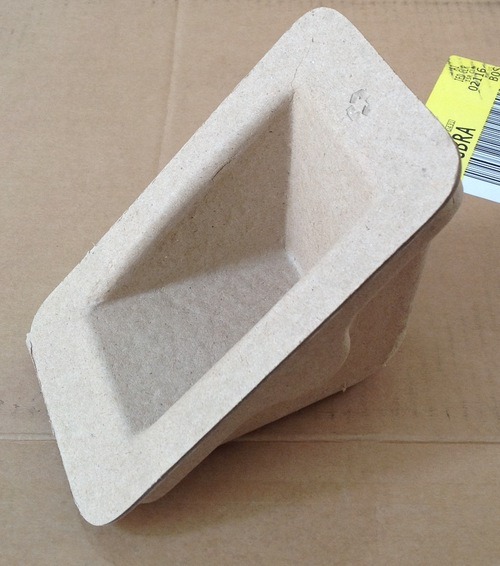
i don't have stuff shipped to me very often, so the arrival of a box in the mail is the occasion for great excitement: what new development in packaging will be revealed today?
when packing an object within a box to be shipped, the goal is to immobilise the object so that agitation and crushing forces don't harm it, while keeping the enclosing box as small as possible. there's been some interesting consumer-facing packing innovation in the last decade, mostly driven by companies that ship a lot of high-value stuff. about 10 years ago, i noticed that dell was shipping assembled laptops in folded, die-cut cardboard matrices. they have recently switched to modular pop-out foam sheets, which do a better job at immobilisation, compression-protection, and volume conservation. dell's boxes have become noticeably smaller. amazon, maybe 8 years ago, started shipping books packed flat and sandwiched inside two layers of corrugated, self-adhering cardboard, like a book raviolo (they have been doing some smart things with packaging research) and have also begun to immobilise objects with large air-filled plastic packs that fill up empty space using a minimum of material that must later be disposed of.
i'd never gotten a box in the mail from apple before and was expecting some interesting packing considering how much trouble they go to in designing the product box-opening experience. i wasn't disappointed. these fiberboard corners are mostly empty (i dissected one), have tremendous crush resistance (i applied 168lbs to one of them by standing on it), spread external forces over a large internal surface, and contain one material and one binder (good for recycling). four units completely isolate and immobilise the object (a macbook air) from the surrounding shipping container, and they add less than 2" to each outer dimension. there is no other packaging material other than the box and the corners are recyclable.
this parsimonious packing solution is thrillingly elegant.
Posted by
vaughn tan
0
comments
![]()
![]()
Labels: design, execution success, history, packaging, technology
Jul 21, 2012
bigger isn't always better
Posted by
vaughn tan
0
comments
![]()
![]()
Labels: android, design, execution failure, hardware, intransigence, iphone, stuff, technology, theory
Jul 20, 2012
the green man
if the round-trip travel time from san francisco to burning man were less than 24 hours, i would contemplate going again.
i packed for burning man in one day, but it was a day of lists and traveling from place to place being foiled in my intentions by people who had been there before me and purchased the last campstove/camelbak/tube of biodegradable soap/etc. rainbow grocery was full of people wheeling about dollies stacked with 2.5-gallon water cubes and looking pensively at dried foods. we drove out to the desert heavily laden with the stuff of life.
black rock city, when we finally got there, was a place of rich contrast. by day, the light permeated everything and so did the dust. our camp, filled with many people from deep springs, contributed a trough of oobleck to run on and sink into. it sat in the trough up front, fermenting slightly in the heat and left our hands stained a pale but persistent green. at night, the light came in neon shades of green, blue, and red, from electroluminescent sheets and wire and many thousands of glowsticks, but was immediately swallowed by the desert. periodically, huge gouts of flame would erupt into the sky and everything would suddenly look as if it was illuminated by sodium streetlight. giant art cars sailed slowly through the darkness in pools of light and music, heading for no destination in particular.
in the vast open space at the center of the city, someone had constructed a radial matrix of full-spectrum LEDs and turned it into a pulsing cylinder of light—i sat there for hours watching these thousands of lighted spheres on the cubitron cycle through a series of displays [video; i recommend watching with the sound off].
one night, we walked out at 2am into the eastern expanses of the playa and climbed up inside the giant sculpture made of cut-up 18-wheelers, then found a mirrored room hung floor to ceiling with strings of red LEDs such that, after climbing in and closing the door, you seemed to be adrift in a matrix of dim red points stretching away into infinity on all sides. it was probably not a real yayoi kusama. a distant black lump in the night turned out to be a clump of couches under palm-frond umbrellas at the edge of black rock city. i fell asleep there and woke up just as the sun rose over the mountains in the east. a panama hat rolled in from the desert and came to a stop at my feet.
i saw more utilikilts than i'd ever seen before and made pancakes one morning with nothing more than flour, baking soda, powdered milk, and water. (they were decent, though dusty.) mike from the camp is a more accomplished cook than i. thanks to him, we had, one night, fresh sweet potato fries and a smoky, cumin-scented pot of lentils and carrots.
we left several hours before the temple of forgiveness was scheduled to burn, and took three hours to get to the edge of black rock city (a whole mile). by the end, we'd shut off the engine and put the car in neutral—rolling it at 0.3 mph wasn't hard. at 5.30am, twelve hours after leaving camp we got back into mountain view, then i drove north to a city washed in morning sun.
san francisco
september 2007
Posted by
vaughn tan
0
comments
![]()
![]()
Labels: art, burning man, execution success, transient
Jul 16, 2012
Jul 15, 2012
consider the lobster
sources close to the matter tell us that the lobsters are swarming from the seas in such profusion that the bottom has fallen out of the market: an opportunity to make chili lobster in the fashion of the motherland. this usually onerous task is no chore if someone else does all the work, including boiling the animals and picking their flesh, and making the two sauces needed, leaving only the most nominal of shallot chopping and ginger grating to be done. it is worth pointing out that extracting the flesh from the shells before adding the sauce 1) allows eating at the table to be done without anyone getting squirted in the eye with lobster hemolymph and 2) leaves behind the raw materials for a lobster stock.
Posted by
vaughn tan
0
comments
![]()
![]()
Labels: cambridge, execution success, food, singapore
Jul 8, 2012
Jul 7, 2012
great things
But why, people ask, did New Englanders formerly eat so much for breakfast? The answer is quite simple. It was because they had great things to do.
edwin v mitchell, it's an old new england custom
Posted by
vaughn tan
0
comments
![]()
![]()
Labels: books
Jul 3, 2012
the nature and art of workmanship
People are beginning to believe you cannot make even toothpicks without ten thousand pounds of capital. We forget the prodigies one man and a kit of tools can do if he likes the work enough.
Posted by
vaughn tan
0
comments
![]()
![]()
Labels: craft, design, execution success, moral fibre, technology, work
Jul 1, 2012
café integral x ats
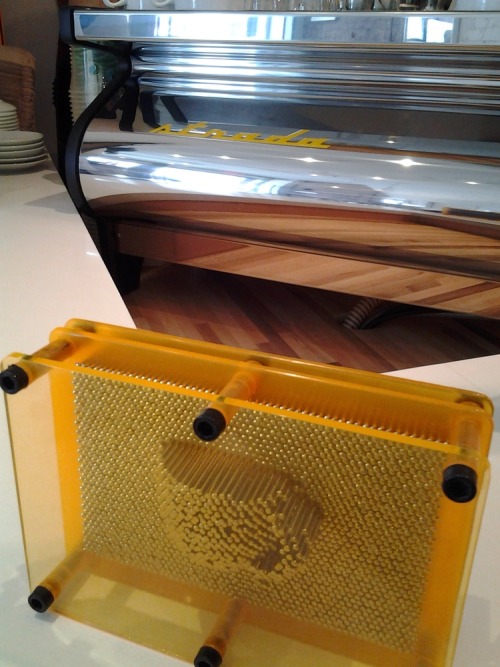
the coffee was good, the cafe was even better. more here. densely populated cities (such as cambridge or boston) need more, many many more, of these minimal retail configurations.
Posted by
vaughn tan
0
comments
![]()
![]()
Labels: coffee, execution success, nyc
Jun 29, 2012
an equivocal and cautious age
But megalomania can be a useful counterbalance to our own equivocal and cautious age. Judd, whose work looks better as time goes by, reminds us via his Marfa empire what it is to care unreservedly, even maniacally, about art, which he regarded as synonymous with life, not peripheral to it.this is what i saw in marfa two years ago (even more).
michael kimmelman, "the last great art of the 20th century"
Posted by
vaughn tan
0
comments
![]()
![]()
Labels: art, execution success, intransigence, intuition, marfa, scalefree, sustainability
part one
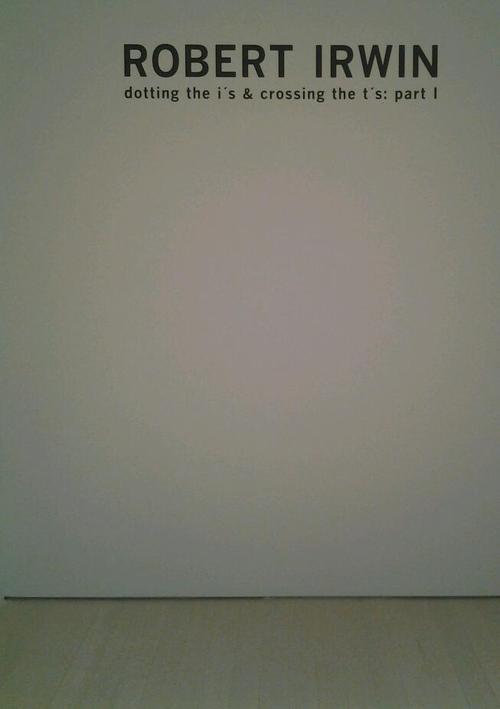
robert irwin at pace (east 57th st, extended til 7/13/2012): a small show worth seeing. also the first retrospective i've seen featuring only new work. this is possible only if the work itself is an evolution of principles and approaches (the refinement of style or a function generator), rather than an accumulation of concrete pieces (a set of works or fixed points). in this way of thinking about development, late work is better for being both more and less: more comprehensive in representing elements of a style and including fewer elements that are extraneous.
the front desk was unamused by my suggestion that one of the white panels could stand a more rigorous cleaning. more on irwin here and here, and a nice little film about the retrospective here.
Posted by
vaughn tan
0
comments
![]()
![]()
Labels: art, execution success, nyc
Jun 27, 2012
Jun 26, 2012
surf shot

surf evolution, a retrospective of art brewer's surf photography, is on show until the end of june at SVA (e 23rd st, between 3rd and 2nd aves). many are the unremarkable shots taken for surf clothing advertisements. but there are also a few gems, like the photo above of matt archbold in the curve of a wave off the coast of sumatra. worth a visit.
Posted by
vaughn tan
0
comments
![]()
![]()
Jun 21, 2012
surface
a tablet and a laptop are two conceptually separate things which will probably have to evolve separately as long as keyboards are our primary method for entering text data. on a laptop, writing is possible, even easy (we do it all the time). on a tablet, regardless of the quality of the attached keyboard, writing is a pain. a tablet is primarily and optimally a device for consuming content, not for generating content. a laptop or desktop is relatively better for generating content and is okay for consuming it.
the tablet's native text input device is a virtual keyboard and other interactions occur through a touch-screen interface. this pulls the hand away from the keyboard even for minor navigation, as anyone who's ever tried to move a cursor in a block of text knows. worse, as implemented in the major tablet operating systems, virtual keyboards don't persist when users switch applications or views (nor should they persist, given the size of current virtual keyboards relative to tablet display sizes).
when entering and editing text is a major use case, both a keyboard touchpad (as on a laptop) or a mouse next to the keyboard (as with a desktop) are superior to touch interfaces for non-text entry interaction. i've brought only an ipad and a keyboard with me on several trips of various lengths, leaving the laptop at home. if i have to do any real work at all—writing, editing, really anything more than reading feeds and emails that require only short responses—the combination of ipad and keyboard is intolerable: it remains a tablet that needs you to touch its screen to navigate, except with a keyboard attached.
now, how about a tablet (with exclusively touch-oriented interaction) that might convert under some conditions to a keyboard- and touchpad-oriented tablet device? (such conditions being: a keyboard + pointer combination being attached, whether directly or over the air.) this would work, but only if the OS successfully switches interaction logics completely, from virtual keyboard+touchscreen to keyboard + pointer device. something like this is probably unlikely to come from accessory manufacturers, since it requires significant OS integration.
this means that surface is potentially quite interesting. but i am ready to have my heart broken again by technology and dumb UX decisions.
Posted by
vaughn tan
0
comments
![]()
![]()
Labels: design, technology, theory, UX
Jun 18, 2012
stuff moves around
from now on, posts related to food (like these) and drink (like these) will be on hydration is our highest priority. i'll start by having pointers to those posts here but in a few months the sap also rises will focus entirely on other stuff.
of late, this has been mostly:
- longer writings about the design of work, of things, of cities, of groups, of technology.
- short explorations of pieces of my research on innovation and ambiguity.
- extracts from books or articles, with and without commentary.
- photographs taken in the course of daily life, invariably with a "smart" phone. what i will do with photographs of everyday food or drink remains an open question.
Posted by
vaughn tan
0
comments
![]()
![]()
Jun 8, 2012
flatten
from kay van vree (found thanks to jenny white).
Posted by
vaughn tan
0
comments
![]()
![]()
Labels: execution success, food
Jun 6, 2012
scomber scombrus
is the atlantic mackerel (also the boston mackerel). being low on the food chain and a habitué of cold waters, it is both rich in flavour and poor in mercury (though some disagree). on a whim (and spurred by the serried ranks of gleaming and bright-eyed fish at the lotte market), i picked up a few and caused them to be gutted on the spot but left otherwise whole.
last summer in denmark, there was much mackerel. (they were making a nordic version of garum.) i ate raw filets of it right after the whole fish were broken down, i ate it fried in richly flavoured unfiltered rapeseed oil on top of toasted rye bread, i ate it pickled in apple cider vinegar with paper-thin radish slices. mackerel is one of the best fish around: it loves acid and/or high heat more than leaner fish do.
at home, the mackerel turned quickly into long, thin filets. mackerel has a toughish skin, which can be removed neatly: with a sharp, narrow-bladed knife, skin-side down, cut just under the tail end to make a little tip of skin and flesh to hold on to. slide the knife along, pressing it down to the board, while pulling on the little tip. easier done than said. (this skin does become nicely crisp when grilled or pan-seared on high heat, but is distractingly chewy otherwise.)
the head (halved medially) and all the little trimmings went into a pot with water to cover. after gentle simmering, this produced a sweet, briny fish stock with a 1/4" thick layer of fish oil on top, worthy of the name fumet. soup tomorrow!
some of the filets went into a rice wine vinegar/salt/sugar pickle solution (with some garlic and ginger), some others went into a cider vinegar/cilantro pickle solution.
the last filets went, after a brief turn in a very hot pan and a squeeze of lime, into me.
Posted by
vaughn tan
0
comments
![]()
![]()
Labels: cambridge, copenhagen, denmark, execution success, food
Jun 3, 2012
hydration is our highest priority
the unrecorded experience is the unremembered experience. and if a good beverage is drunk, the experience should be remembered.
hence, hydration is our highest priority. please forgive the purple prose.
Posted by
vaughn tan
0
comments
![]()
![]()
May 29, 2012
the essence of origami
I'm not trying to make a photograph, I'm trying to capture the essence, the impression of something. Some subjects I come back to over and over—cicadas, simple birds. I can do them in a different way and get ever closer to my mind's-eye image of what they ought to look like. You wouldn't think that origami could be reduced to equations, but some parts of it can. But the artistic aspect will never be captured in equations.on which, also see arthur ganson, robert irwin, and the unknown craftsman.
robert j. lang, "into the fold."
Posted by
vaughn tan
0
comments
![]()
![]()
Labels: art, books, craft, decisions, epistemology, execution success, moral fibre, sociology, sustainability, technology
May 23, 2012
pith
sep kamvar, whose appointment to the media lab i found mystifying, has some important things to say and says them nicely.
Posted by
vaughn tan
0
comments
![]()
![]()
Labels: decisions, execution success, intransigence, sociology, technology, theory
taste and choice
The thing I like most about rediscovering Led Zeppelin—and listening to the Chemical Brothers and The Bends—is that they can no longer be comfortably accommodated into my life. So much of what you consume when you get older is about accommodation: I have kids, and neighbours, and a partner who could quite happily never hear another blues-metal riff or a block-rockin' beat in her life. I have less time, less tolerance for bullshit, more interest in good taste, more confidence in my own judgement. The culture with which I surround myself is a reflection of my personality and the circumstances of my life, which is in part how it should be. In learning to do that, however, things get lost, too, and one of the things that got lost—along with a taste for, I don't know, hospital dramas involving sick children, and experimental films, was Jimmy Page. The noise he makes is not who I am any more, but it's still a noise worth listening to; it's also a reminder that the attempt to grow up smart comes at a cost.
nick hornby, songbook
Posted by
vaughn tan
0
comments
![]()
![]()
Labels: books, decisions, moral fibre, music, theory
May 10, 2012
nerd pancakes
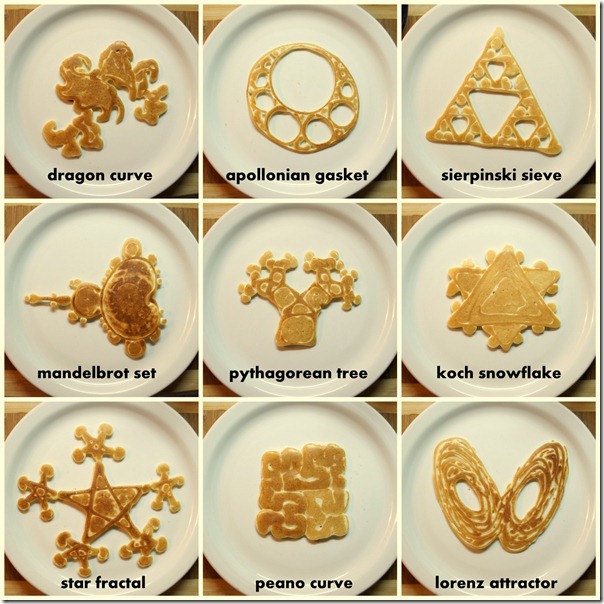 this is saipancakes, and there is much, much more. [thx sabeel]
this is saipancakes, and there is much, much more. [thx sabeel]
Posted by
vaughn tan
0
comments
![]()
![]()
May 9, 2012
the türkısh keyböard
makeş ıt eaşy to wrıte amüsınğ emaıls, but where ıs the apoströphe?
Posted by
vaughn tan
0
comments
![]()
![]()
Labels: turkey
Apr 30, 2012
intentional ambiguity
Tenses are important:
abstract: This ethnography of nine internationally renowned avant-garde culinary groups in the US and Europe shows that they operate successfully despite having intentionally ambiguous (and hence uncertain and unstable) member roles and group goals. This is in contrast to the sizeable body of research suggesting that individuals and groups need clarity and stability to function effectively. I describe how this intentional ambiguity modifies group and interpersonal processes in these groups, then propose explanations for how these modifications might allow them to adapt to changing resources and environments and enable their members to teach and learn complex things such as house style. I conclude by showing how internal ambiguity supports adaptability and thus helps groups respond to external ambiguity.
TL;DR version: Ambiguity and uncertainty are not always bad. Wisely deployed, they can be beneficial for those in the business of innovation or working in unpredictable and rapidly changing environments. Which is nearly everyone working in a high-end restaurant, a startup, or an R&D group these days.
Just saying.
committee: Christopher Winship (co-chair), Amy Edmondson (co-chair), Jeffrey Polzer.
Posted by
vaughn tan
2
comments
![]()
![]()
Labels: design, dissertation, epistemology, food, intransigence, research, scalefree, sociology, theory, work
Apr 23, 2012
setting type
or, rather, TeX. or, actually, LaTeX. what does someone who doesn't write equations need latex for? the awful truth is: i switched to latex so that i could automatically set old-style numerals. also, it is always nice to separate content from representation and data from metadata (as anyone who has ever had to clean up a word document's formatting will tell you).
latex (built on tex) is a document production system. its chief virtue is in separating content from representation. there is no way to do this without a) thinking through the structure of the document, b) learning how to represent the structure abstractly (ie, structural markup), then c) writing documents separately from how they will appear in finished form (but marked up for structure).
every production system involves massive up-front investments of time (the so-called "learning curve") before the palmy days begin. latex was no different. i spent many tasty hours learning how to insert images, write tables, rotate tables, control linespacing, etc. then, for more typographical control, i added the fontspec package and xelatex. this broke some environmental parameters, which required debugging. did i mention how some typefaces don't have correctly coded glyphs and don't work as expected? (= more debugging). then i decided to go for broke and move my citation database to bibtex. this consumed many more tasty days. now my papers look great, i cite effortlessly, and it's usually all just peachy.
my latex distribution is miktex (2.9). my typeface of choice is minion pro (it handles oldstyle numbering, is readable in block text), and i use the article document class. to handle graphics, i use the graphicx package. for typography, the fontspec package. for tables, the tabulary package. for citations, the natbib package. other miscellaneous utility packages include rotating (to rotate things like tables and figures), booktabs (for high-quality table formatting), and endfloat (to automatically move all figures to the end of a document; endfloat requires a separate configuration file in the source document directory if it is used with rotating).
i renew the quote environment to change the linespacing inside blockquotes. i manage my citation database with jabref and add new citations either by hand (if my citations come single spies) or by importing from zotero (if they come in battalions). i compile by running xelatex, bibtex, then xelatex twice more. (it took a long time to figure out how to get the commands to call the right input files, and that the \bibliography command requires filenames with extensions on some operating systems and not on others.)
then, a dark moment. in the late stages of preparing a manuscript for submission last week, i ran into a problem: the journal calls for an idiosyncratic reference style and provides no style file. two options: rewrite a style file to suit, or generate a new one. let all of us who have been in a similar quandary but lack extensive experience with stack languages thank the creator of this custom reference style maker. you answer a string of questions, it generates a file that you can then compile into a style file (.bst). this took a bit (well, no, let's be honest: hours and hours) of tweaking to get 98% right. (remaining 2%: do you know how i can force a linebreak between the author block and the year block and a tab character between the year block and the rest of the citation? if yes, please email me.)
"triumph!" i thought. but wait, .pdf files are verboten for this journal's submission machinery. fortunately, .ps files are ok. a simple matter, you might think, to take the .xdv files from xelatex and use dvips to produce a .ps file. except dvips doesn't work with .xdv. xpdf's pdftops converter saves the day (though erratic, it is the least temperamental and the one that copes best with transparency in the source pdf).
there must be a better way.
Posted by
vaughn tan
2
comments
![]()
![]()
Labels: decisions, design, education, execution failure, execution success, moral fibre, process, sociology, technology, type
Apr 22, 2012
the argument for quality
Artists need to be in there from the start, making the argument for quality. The key to this thing is, for example, if you give an engineer a set of criteria which does not include a quality quotient, as it were—that is, if this sense of the quality, the character of the place, is not a part of his original motivation—he will then basically put the road straight down the middle. He has no reason to curve it. But if I can convince him that quality is absolutely a worthwhile thing and we can work out a way in which the road can be efficient and also wander down by the river, then we essentially have both: he provides quality in that the road works, I provide quality in that it passes by the river. In that way, art gets built into the criteria from the beginning rather than being added on afterward. In many cases, it may not cost any more, or just a bit more, for the road to wander by the river. As opposed to, say, giving the artist one per cent afterward—which is, hell, just tokenism to the nth degree. The best they’re going to be able to do is put in a few doodads. But if you affect this whole process from the beginning by putting in place some quality criteria and you look around and ask yourself who in this society are trained to make this argument for quality, the only ones that I can think of are artists. We’re the only ones with no real rationale for being except developing aesthetics, or quality—we have no other function. So our key role in our society right now—and what we’re really talking about here is translating values into dollars—is for artists to make winning arguments for why considerations of quality are absolutely necessary.
robert irwinin lawrence weschler's new yorker article "in a desert of pure feeling" [PDF]
Posted by
vaughn tan
0
comments
![]()
![]()
Labels: art, epistemology, execution success, instruction, intransigence, intuition, moral fibre, scalefree, sociology, sustainability, technology
Apr 20, 2012
gestural engineering
i'm reading, as i do every year, seeing is forgetting the name of the thing one sees, which is both a biography of robert irwin and an extended discussion of what it means to think about making a thing. the book is rich with interesting stuff for anyone willing to spend some time with it. it also represents a minor stream of thinking which currently appears scattered and diffused across many fields (computer science, organizational theory, design, manufacturing, and others): accounts of grasping not for mastery of a concrete thing but the abstract generative principle that produces concrete things of that class.
for instance, take arthur ganson. ganson is the MIT sculptor in residence, and the MIT museum has an ongoing exhibition of his work (note for cambridge residents: admission to the MIT museum is free today, 4/20, as part of the cambridge science festival). this is ganson's TED presentation (the embedded video will start at the beginning of the section transcribed below):
just as in robert irwin's work, there's a sense that there is a platonic ideal concept straining to emerge, that the process of making is a process of getting closer (but never close enough) to the realization in the real world of the idea in the mind:
i imagined a very simple gestural dance that would be between a machine and just a very simple chair. and when i'm making these pieces, i'm always trying to find a point where i'm saying something very clearly and it's very simple, but at the same time it's very ambiguous. i think that there's a point between simplicity and ambiguity, which can allow a viewer to perhaps take something from it. and that leads me to the thought that all of these pieces start off in my own mind, in my heart, and i do my best at finding ways to express them with materials. and it always feels really crude, it's always a struggle, but somehow i manage to get this thought out into an object. and then it's out there. it means nothing at all, this object just means nothing. but once it's perceived, and someone brings it into their own mind, then there's a cycle that's been completed. to me, that's the most important thing, because being a kid i wanted to communicate my passion and love and that means the complete cycle of coming from the inside, out to the physical, to someone perceiving it.ganson has also posted footage of the performance of machine with chair, which includes the setup.
Posted by
vaughn tan
0
comments
![]()
![]()
Labels: art, books, complexity, craft, epistemology, irwin, theory
Apr 17, 2012
Apr 15, 2012
the myth of risk reduction
garry kasparov, considering the slowdown in technological development*, writes that
People have a sense that we should receive benefits from our investment, but need to reduce the uncertainty. Risk should be less, but the income should be the same. This creates a gap, because in a free society, in a market economy, there is a direct relationship between risk and return. If you want to avoid risk, but receive ten percent of of your annual income from your investment, you open the way for the so-called financial engineering. In fact this is all fake, not real income, because it is not based on real changes in the economy, because you do not create new and tangible assets. In the 1960s young boys dreamed of becoming aerospace engineers, now they want to be financial engineers, working in investment companies, which are the most attractive spheres for talent. This naturally affects the quality of the total scientific potential, because financial engineering creates nothing.he's right, of course, though it would have been nice to distinguish between risk and uncertainty as frank knight (1921) did:
Uncertainty must be taken in a sense radically distinct from the familiar notion of Risk, from which it has never been properly separated.... The essential fact is that 'risk' means in some cases a quantity susceptible of measurement, while at other times it is something distinctly not of this character; and there are far-reaching and crucial differences in the bearings of the phenomena depending on which of the two is really present and operating.... It will appear that a measurable uncertainty, or 'risk' proper, as we shall use the term, is so far different from an unmeasurable one that it is not in effect an uncertainty at all.the return on any investment (or, more generally, the outcome of any action) comprises three conceptually distinct components: a known part, a knowable unknown part, and an unknowable unknown part. the knowable unknown is risk, and risk can be "reduced" or "managed" by spending effort, time, and money in advance: gathering information and preparing defensive assets of a known nature and quantity.
the unknowable unknown is uncertainty and is not reducible by advance action. the only way to "manage" uncertainty is to be ready to respond to conditions as they change unpredictably: this is costly in a different way since it requires creating a potentially enormous reservoir of excess capacity with which to respond. maintaining this excess capacity is expensive and may not pay off in the short or even the medium term.
responding to risk and responding to uncertainty require different approaches and different processes. all innovation requires both types of response. innovation in rapidly and unpredictably changing environments requires more preparation for uncertainty than risk. surprise! this will be my dissertation.
* found, since i read chessbase only infrequently, through tyler cowen's marginal revolution.
Posted by
vaughn tan
0
comments
![]()
![]()
Labels: decisions, design, dissertation, process, scalefree, sociology, sustainability, theory
Apr 14, 2012
Apr 6, 2012
what is design?
- design is problem-finding first, and only then problem-solving.
- if design is problem-finding first, then "designer" isn't necessarily a specific role played by specific people on a team. design thinking (see below) is a way to approach the world that every constituency and individual should possess, so that they can figure out the right problems to solve.
- sometimes, finding the right problem requires lots of search and research. but this isn't just reading papers and essays. research is also (maybe more about) being in the world, exploring it, and understanding it.
- most importantly, if design thinking is deciding what the right problems are to solve, then design at base is an issue of figuring out what values we have, what makes a problem the right one to put effort behind. values aren't objectively evaluatable, they cannot be commensurated. all you can do with values is state what values you have and be open to changing your mind.
Though it's tempting to think of design in terms of final output, say a chair or piece of software, it is more useful to think of design as a process that leads to an outcome intended to solve a problem. The kinds of problems to be solved can be in nearly any domain—physical objects, processes, interactions, foods, intangible systems, data representations, institutions, organizations, public policy all can be developed using a design process, though the concrete details of the design process will vary depending on the domain.
Design as a process
While it is possible for, say, the design of a more efficient dialysis pump or a better system for mobilizing non-voters during an election year to materialize fully-formed from a designer's head, this is a rare occurrence. More often, the design process iterates through several stages. You can begin this process at any one of the stages (and go in any direction). The process ends when the designer is satisfied with the outcome (or loses patience).

Defining the need (or problem-finding) often involves identifying problems to solve, problems to not solve, and criteria for judging solutions. Problems can be defined at many levels of abstraction and frequently interact with each other; the outcome of a design process reflects the constellation of problems driving the process. For example, Gmail (the webmail service) resulted from a process driven by numerous problems ranging from relatively abstract ones like "How can email service be improved?" to concrete ones like "How can webpage programming languages like HTML and Javascript be modified to make a web application feel like a client application to the user?" or "Folders are silly. What do we replace them with?" Often, research, prototyping, and testing will indicate either that that the problem needs to be redefined, or that solutions to the original problems posed generate new problems.
For the designer trying to solve a given set of problems, the universe of possible solutions to a given set of problems is infinitely large and insufficiently understood. Research helps begin the process of increasing knowledge of possible solutions while also eliminating impossible, unfeasible, inelegant, or problematic solutions. Conducting research takes different forms depending on the kinds of problems faced and the degree of design iteration that has already occurred. Some examples of research include market studies, patent searches, product testing, conference attendance, and field studies. The objective of research in the design process is to leave the designer with a smaller, more probably viable, set of possible solutions to dissect, recombine, and evaluate.
Often, evaluation is easier and more effective when possible solutions are given a more concrete form that designers and testers can interact with—a prototype. Prototyping can range from developing a policy proposal, to making wireframes (mockups of how webpages or software applications will look and the order in which users will encounter them), to 3D and physical models of varying degrees of precision. Prototypes made early in the iteration process tend to be simpler, faster, and cheaper than those made later in the process. Building prototypes used to be expensive and slow, and required extensive equipment and/or specialized knowledge (hence the proliferation of proof printers, model shops, one-off precision milling shops, and the like). Fortunately, fast, inexpensive prototyping software, hardware, and facilities are becoming increasingly available. Fast, inexpensive prototyping accelerates the design iteration process significantly, since prototypes are frequently the source of rich insights for designers, particularly in fine-tuning elements of the product and in recognizing new problems that must be resolved.
Design prototypes are evaluated against the solution criteria established in the design process's problem-definition stage. Designers collect information about the design's performance and use this to evaluate the design; in other words, they try to understand if and how the design should be modified in the next iteration of the design process. Particularly in the case of software applications, it is becoming increasingly clear that designs cannot be considered complete or effective if they do not include methods for collecting information needed to evaluate the application's effectiveness in solving the design problem. As with prototyping, gathering information about design performance has become easier, less expensive, faster, and more comprehensive for many categories of products.
Posted by
vaughn tan
0
comments
![]()
![]()
Labels: craft, decisions, design, intuition, process, theory, translation
Apr 3, 2012
les jardins
a box of macarons from pierre hermé landed, unexpectedly, in my hands last night.* macarons are a bubble which has not yet popped. a few years ago, most people wouldn't know them from a macaroon. today, many places with aspirations to quality (and some without those aspirations) manufacture and sell them. for a while, mcdonalds in france sold macarons.
macarons are little sandwiches with cookie shells made of ground and blanched almonds held in a flavoured meringue, filled with a flavoured ganache or cream. it is easy to make a mediocre macaron.
the shell is notoriously finicky. the meringue must be robust enough to support the almond flour during baking, requiring the maker to detect and respond to very small gradations in the texture of the uncooked meringue. this in turn responds to very small gradations in ambient temperature and humidity and the hydration of the meringue. macaron-making thus features many arcane directives. some recipes call for aged egg whites (which have lower water content due to evaporation). many formulations also call for uncooked macaron shells to be set out for a while to dry further and develop a skin on the top surface. this skin constrains the cookie as it rises during baking, producing the desired smooth, glossy top and rough-edged foot.
fillings should have flavours and textures that complement the shells. overly aggressive flavours are unfortunately common, but texture seems to be the bigger hurdle. many fillings in inferior macarons are poorly matched to the texture and robustness of their shells. biting into a robust shell causes a too-fluid filling to squeeze out of the sides. conversely, a delicate shell collapses too quickly around a too-rigid filling. both scenarios are untasty. (not incidentally, the same principle of textural harmony applies to sandwich construction and design.)
inevitably, average macaron quality declines as supply of macarons increases. i am happy to leave most macarons on the shelf, for those who would exchange their hard-earned doubloons for dense (or over-airy and/or sticky) shells and tasteless (or overly flavourful and/or overly avant-garde and/or poorly textured) fillings.
on the other hand, it is a good day when life hands you a box of macarons from pierre hermé. their shells have perfect texture, density, and surface, and just enough understated filling of precisely the right texture (some traditionally flavoured, others quite unusual). naturally, he is Big in Japan. confiserie sprüngli, conveniently close to the main train station in zurich, is another place to get very correct macarons of a different style. (and different name. these luxemburgerli are smaller, with a more fluid filling and a more delicate shell, and more traditional flavours.)
a great macaron is usually a rare and costly experience.
* thx journeyman; welcome home.
Posted by
vaughn tan
0
comments
![]()
![]()
Labels: art, complexity, craft, execution success, food, paris, process, zurich
Apr 2, 2012
a prescription for a grand cuisine
A prescription for a grand cuisine: Take a vigorous people, give them an empire, let them get accustomed to the spoils, and then take it all away again ... bit by bit. Palates accustomed to good things will fight—hard, then harder still—to keep them, or to find replacements. Luxuries now rationed will become distilled. The ultimate cuisine may not be as luxurious as it was in its "glory," but it will be more inspired, more various, and more complexly realized. Roman cooking was lavish; Italian cooking is great.
john thorne and matt lewis thorne, "la cuisine creole," in serious pig.
Posted by
vaughn tan
0
comments
![]()
![]()
Labels: books, design, epistemology, execution success, food, history, moral fibre, process, sustainability, theory
Mar 31, 2012
Mar 29, 2012
you can't get there from here
and here we are, once more riding on the squeaky vinyl seats of the acela "express," mid-way between new york and boston. there's no easy and efficient way to get to princeton from boston. the least painful way is the most expensive (fortunately, today's travel was on someone else) and possibly the slowest: acela from south station to ny penn, transfer to nj transit for princeton junction, then transfer again to the appropriately named "dinky"* (filled with wearers of knit ties and blazers with elbow patches reading deleuze and lacan) which eventually deposits you at princeton station. there appears to be no unified booking system that will get you a routing across all service providers and allow you to purchase all the tickets you need. on the way to princeton this morning, total time door to door was 6 hours and 33 minutes. absolute serenity and lack of congestion in the streets did not quite compensate for waking up at 3.30am.
update: nothing like an account of an european train ride to put american rail service into perspective. thank you tyler brule.
* all-knowing max says: "'dinky' meaning small comes from the trains, not the other way around."
Posted by
vaughn tan
0
comments
![]()
![]()
Labels: cities, execution failure, trains
Mar 24, 2012
8 natural handstands
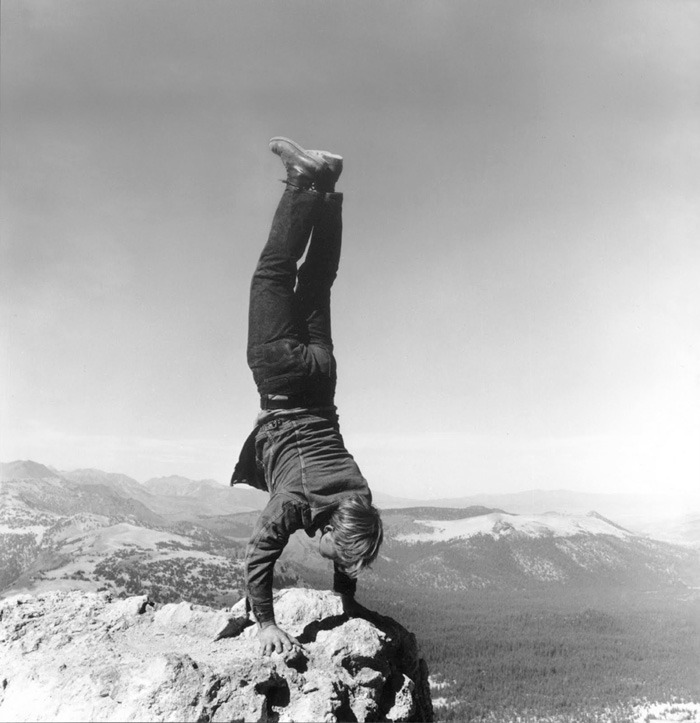
robert kinmont, 1969.
Posted by
vaughn tan
0
comments
![]()
![]()
Labels: art, execution success, photos
Mar 20, 2012
west coast weather report
i passed through san francisco this week on my way back east, causing two days of
nearly continuous mild drizzle across much of the bay area. weather notwithstanding, i walked through the mission as usual to inspect the latest crop of artisanal cafes and stores selling things that are nice but unnecessary, this time beginning at the blue bottle on mint street. by the time i got through soma, i had become most moist. this condition, for which tacos are
indicated, coincided with the close proximity of el norteno, a taco
truck in the parking lot on the corner of 6th and bryant. the carnitas
tacos did not disappoint, nor did the pickled carrots that came with.
aggressive weather promotes the development of moral fibre and philosophical thinking, for instance when you hole up in an ice cave with your sled dogs and reindeer carcase to ponder the transience of life while escaping a blizzard and polar bears. san francisco weather, in contrast, is much more like trying to fall asleep in an uncomfortably chilly room with a buggy thermostat, a too-thin blanket, and abundant finger foods.
Posted by
vaughn tan
0
comments
![]()
![]()
Labels: cities, execution success, food, moral fibre, san francisco, weather
Mar 17, 2012
galatoire's

after finishing late at stella! the night before, jake took one for the team and was in the line at 9am for the first seating at galatoire's. i got to a slower start and arrived around 10am after stopping for coffee (but not breakfast, for reasons that will soon become apparent).
ahead of us in the line were at least two people waiting to sell their seating options to fat-walleted diners for whom the allure of galatoire's does not extend to getting up early. for those seeking guidance: the hours before lunch can be profitably filled with the times-picayune (define: picayune) and pimm's cups imported from the bar around the corner. a folding chair may also be useful.
the doors opened at 11.30am and we moved upstairs to the bar, which was furnished with much in the way of wood and tradition. our request for dry vermouth on the rocks was misinterpreted. fortunately, as the bartender noted, "no one ever has trouble moving a couple shots of vodka." after milling about briefly, we were called to the dining room below.
jake and christina go often to new orleans, and are Known To The House. our lunch order was an ongoing conversation with their accustomed waiter, who vanished to put in for "some little bits to get you started." a sidecar soon arrived with robustly sugared rim and darkish aspect contributed by lemon juice of an antique variety. it tasted like no sidecar i'd ever had before but was perfect for those who enjoy dry, oxidative wines. not long after, plates of textbook soufflé potatoes and fried sticks of eggplant showed up. a small dish of powdered sugar came with, to be mixed with crystal hot sauce. i tried this combination to humour the table. everything became blurry after this first sortie, as careful accounting is neither possible nor desirable at galatoire's.
there were several plates of hot oysters, diverse gumbos, and stuffed eggplant (more accurately described as a large pile of crabmeat bound with cream and lightly garnished with eggplant). intermittently, tables of celebrants sang "happy birthday" and expected other diners to join them; this got old by the seventh or eighth rendition. if memory serves, other things that arrived were:
jake found bargains in the capacious wine list—a 2005 dry muscat from alsace from dirler-cadé and a 2001 alsace pinot gris from trimbach. the hard truth: i remember nothing more than that they were bone-dry with great acidity, great pairings for a long lunch light on meat and vegetables but heavy on cream and seafood.
dessert was unnecessary but arrived anyway: a perfect creme caramel (see more about gels here) and a sweet potato cheesecake. followed by a tureen of coffee dosed heavily with brandy, cloves, cinnamon, and orange peel, then set aflame.
certainly a nearly perfect meal, though perhaps not ideal for those with genetically high cholesterol levels.
we finished lunch at 5.45pm.
Posted by
vaughn tan
7
comments
![]()
![]()
Labels: drink, execution success, food, new orleans, wine


